The document provides a comprehensive overview of Java programming fundamentals including types of software, application development, Java's object-oriented principles, methods, operators, conditionals, and control flow statements. It covers essential components such as packages, variable types, and loops, illustrating with code examples for clarity. Additionally, the document highlights Java's features like the 'write once, run anywhere' capability and the use of JDBC for database connectivity.
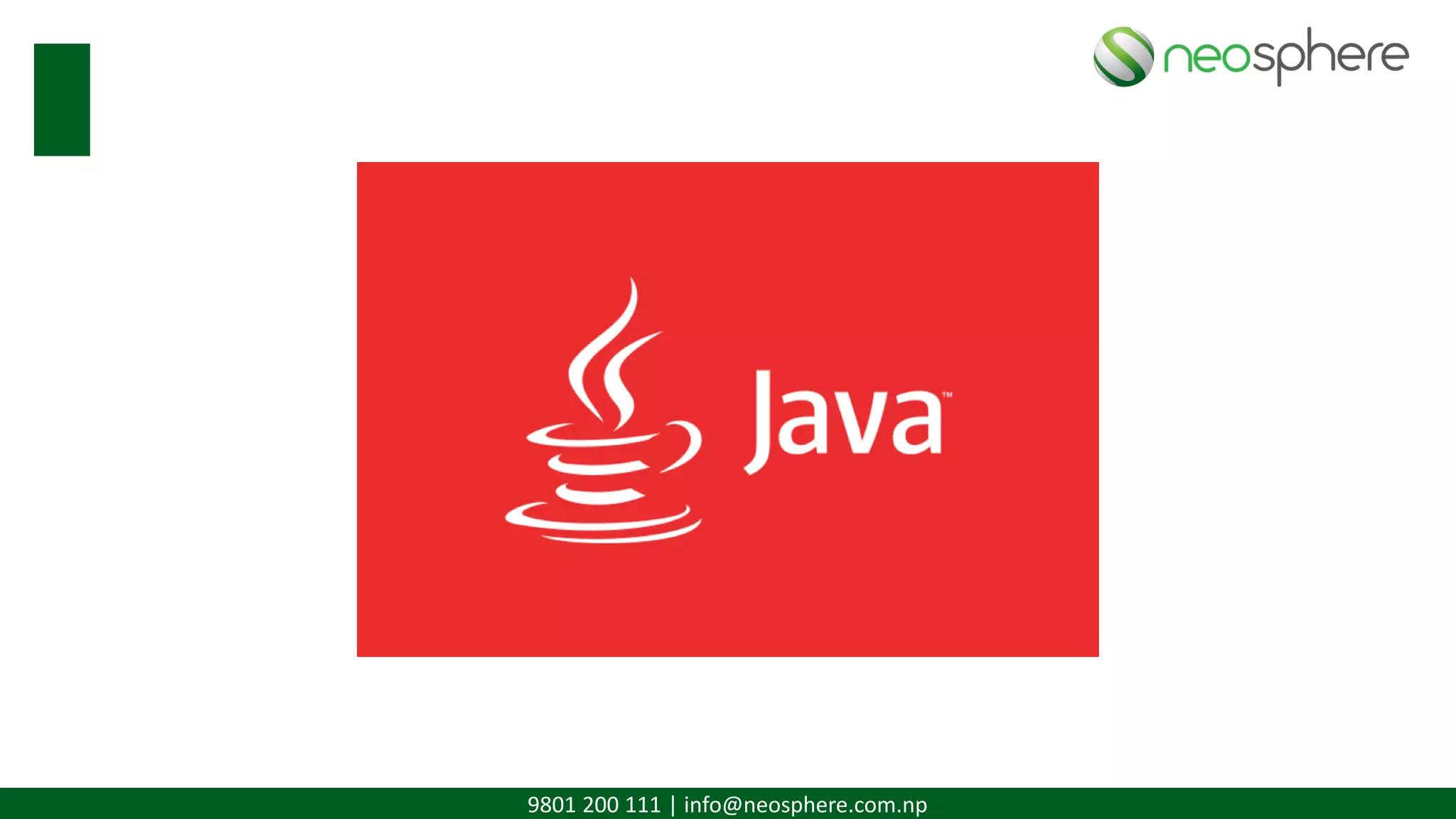
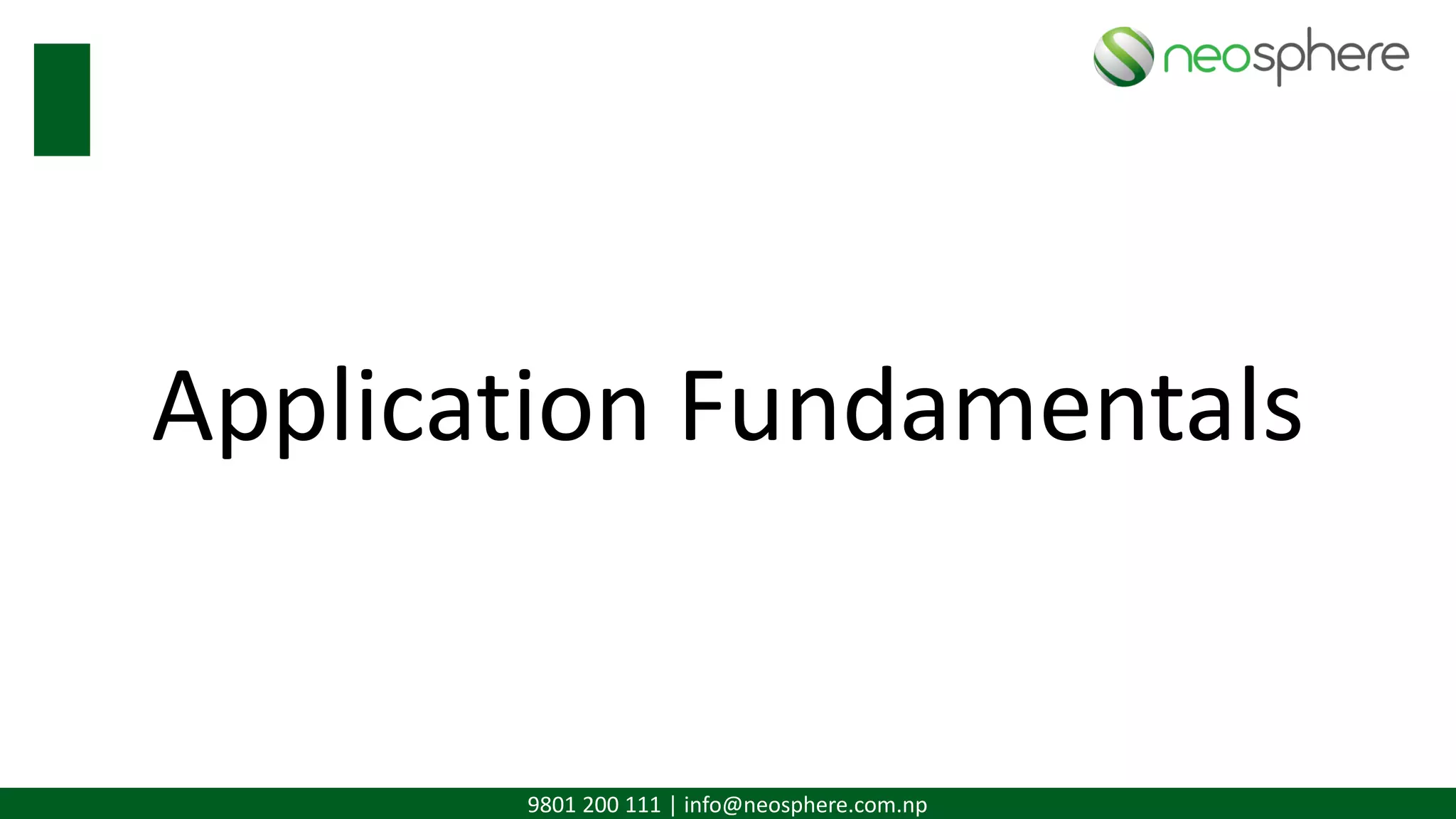
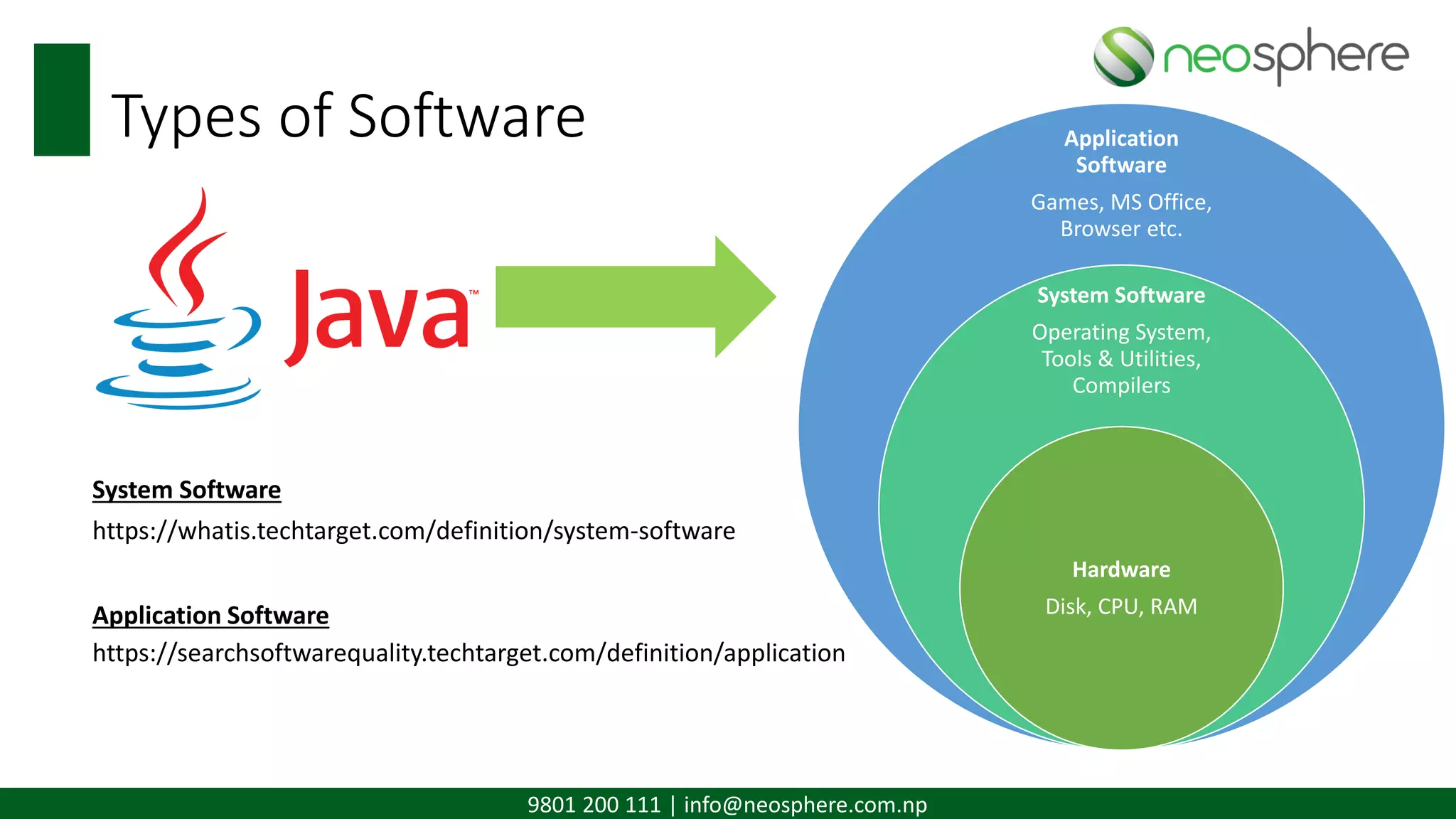
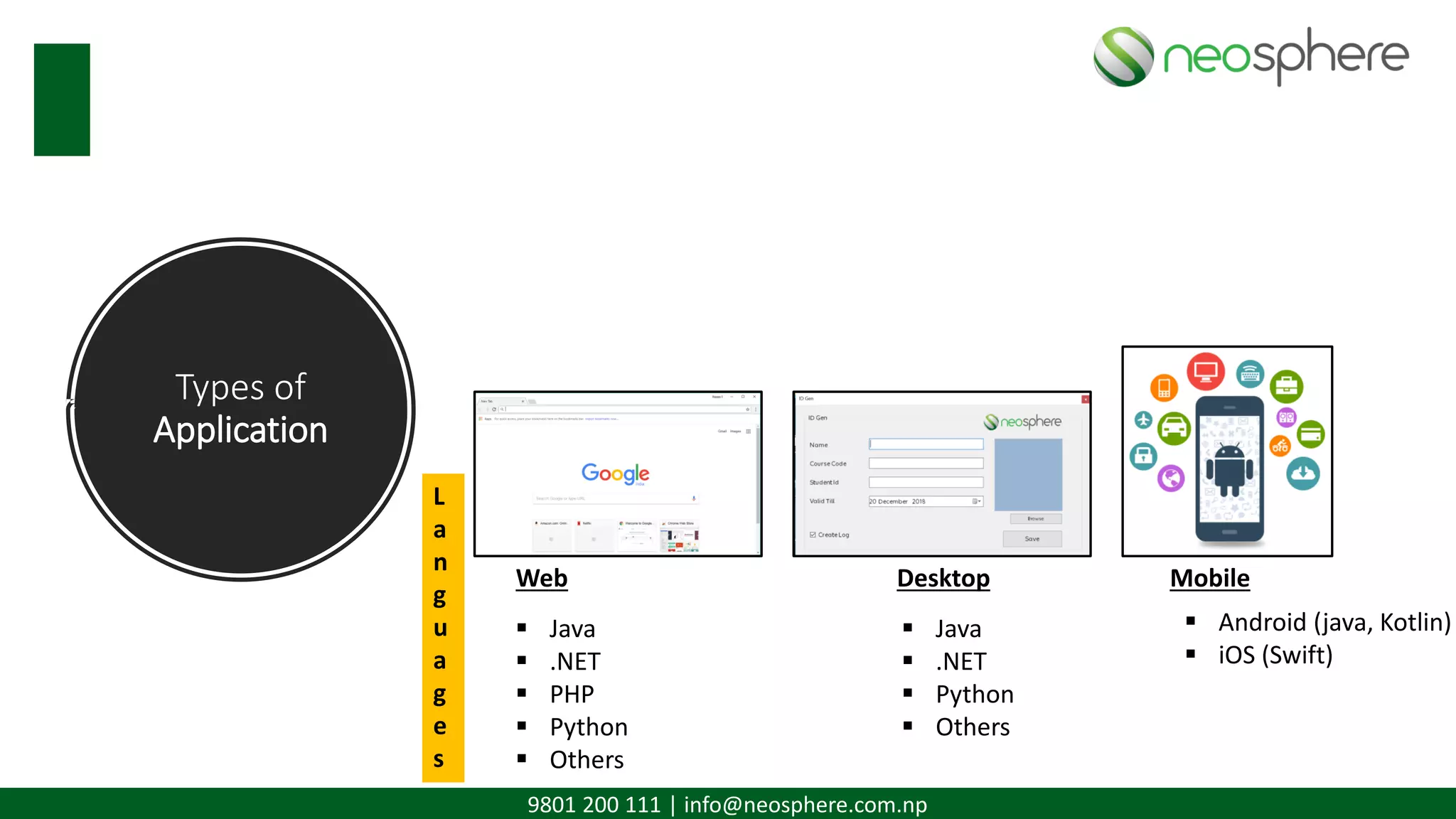

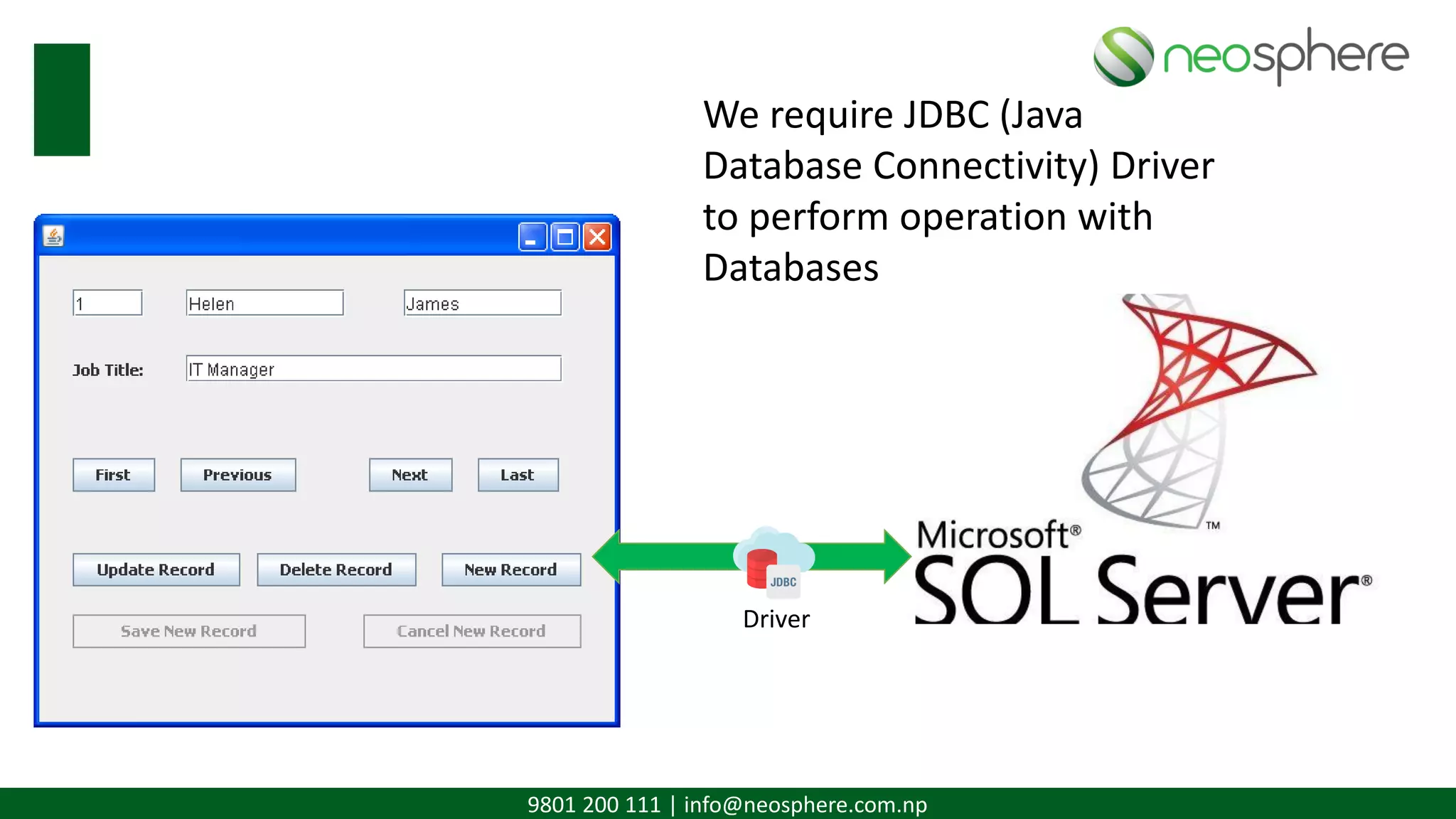
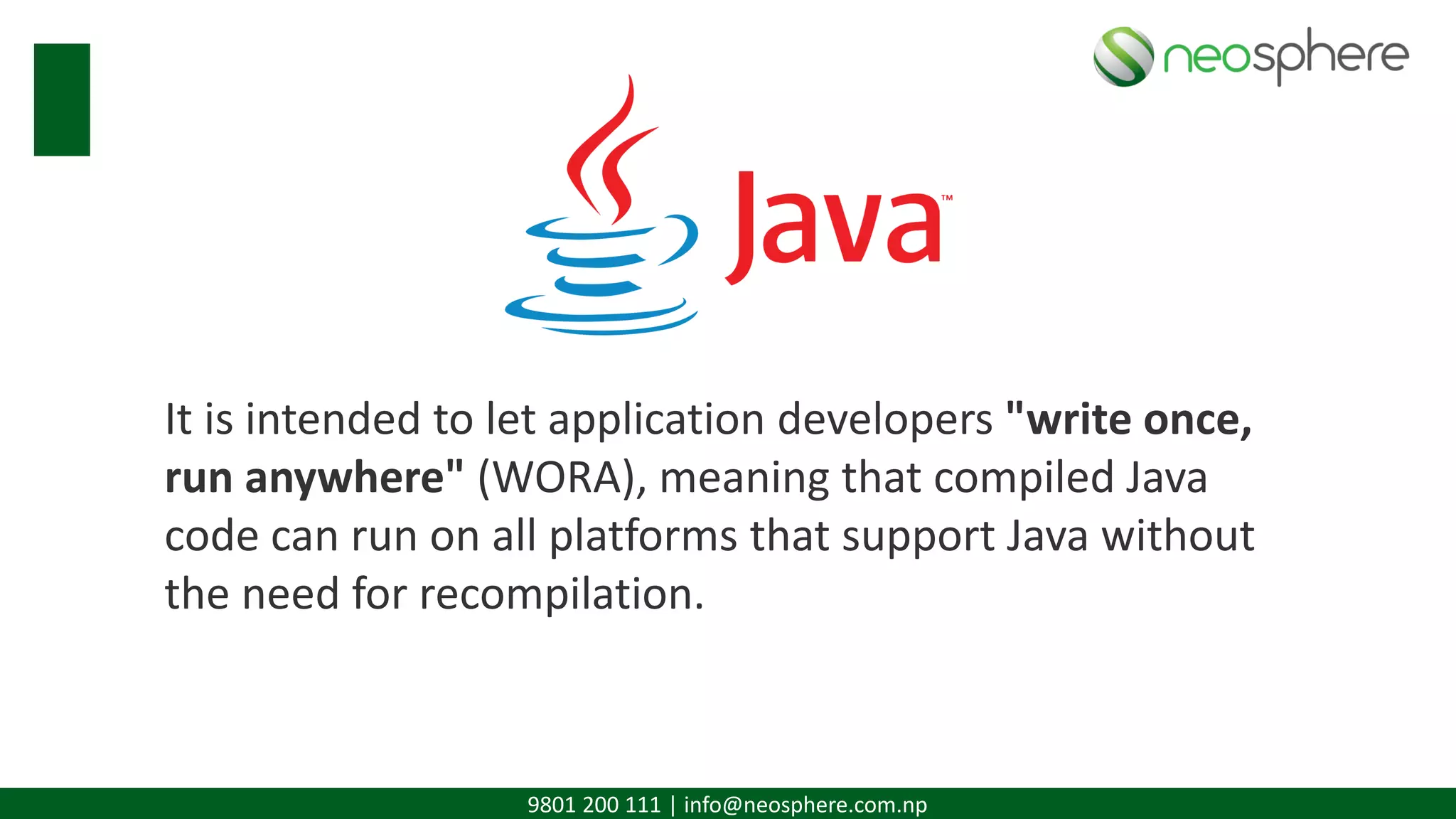
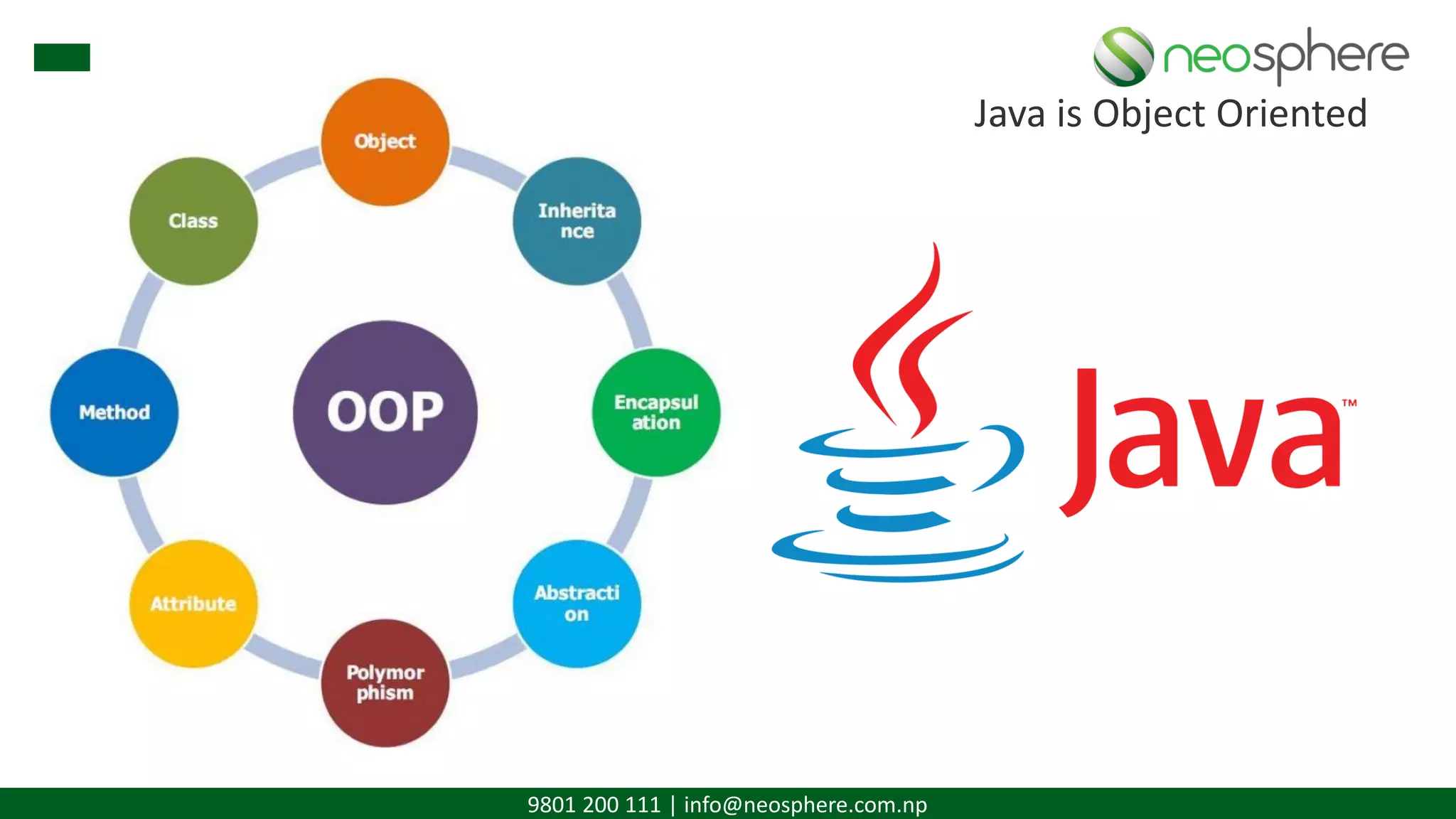
![9801 200 111 | info@neosphere.com.np public class HelloWorld { public static void main(String[] args) { System.out.println("Hello, World!"); } } Compile: javac filename.java Run: java ClassName](https://image.slidesharecdn.com/java-190220105554/75/Java-Programming-Workshop-9-2048.jpg)
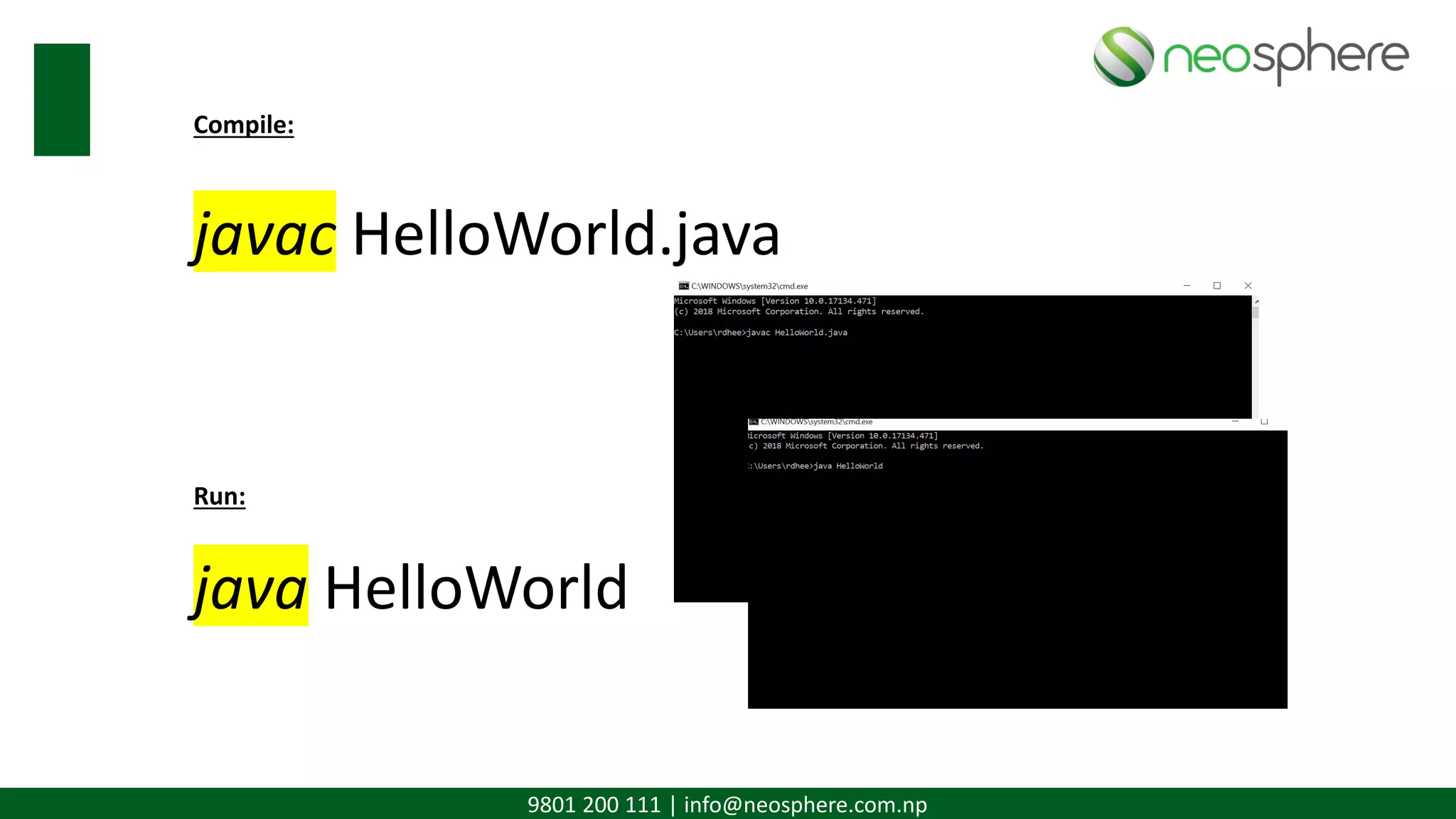
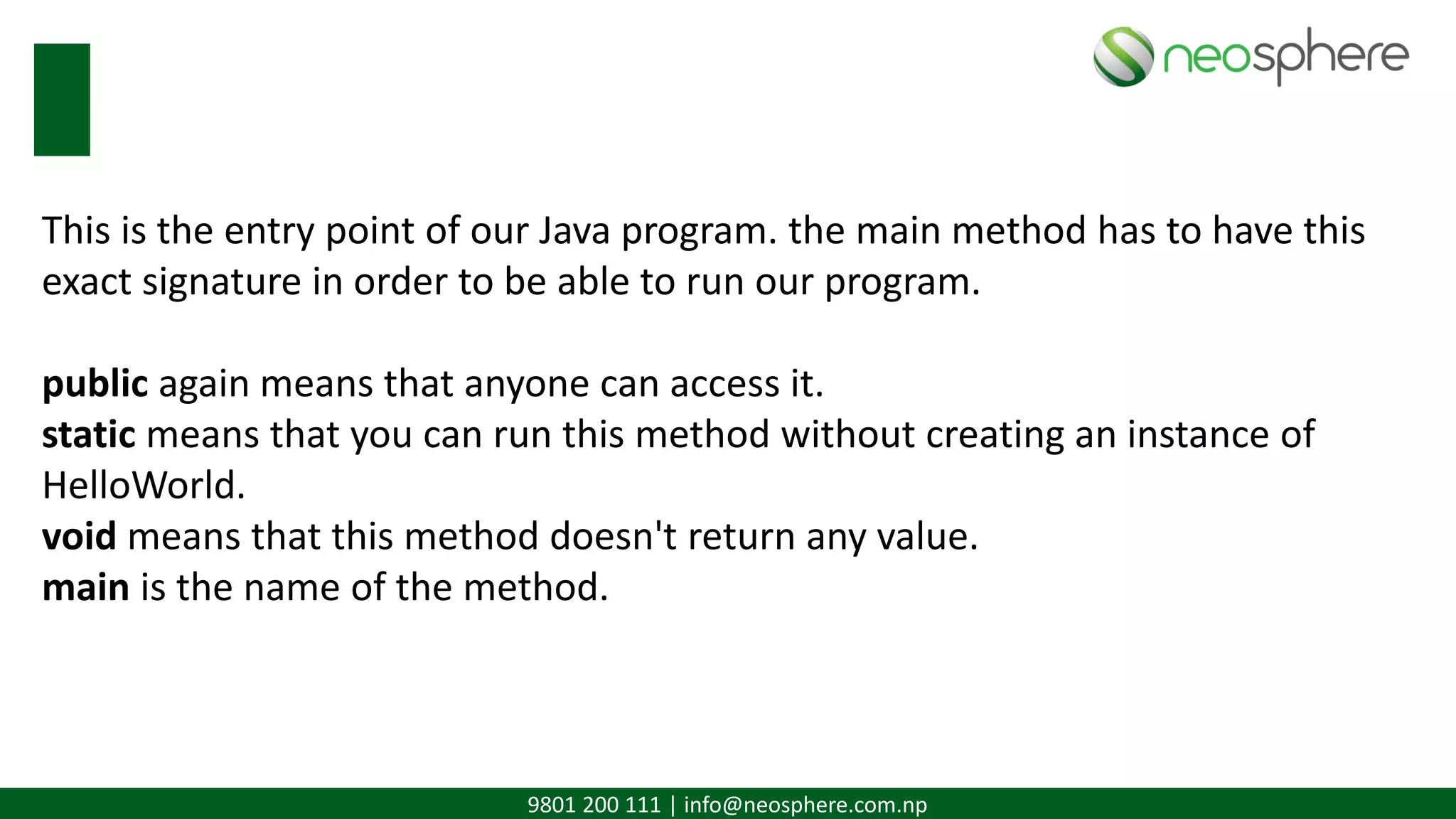
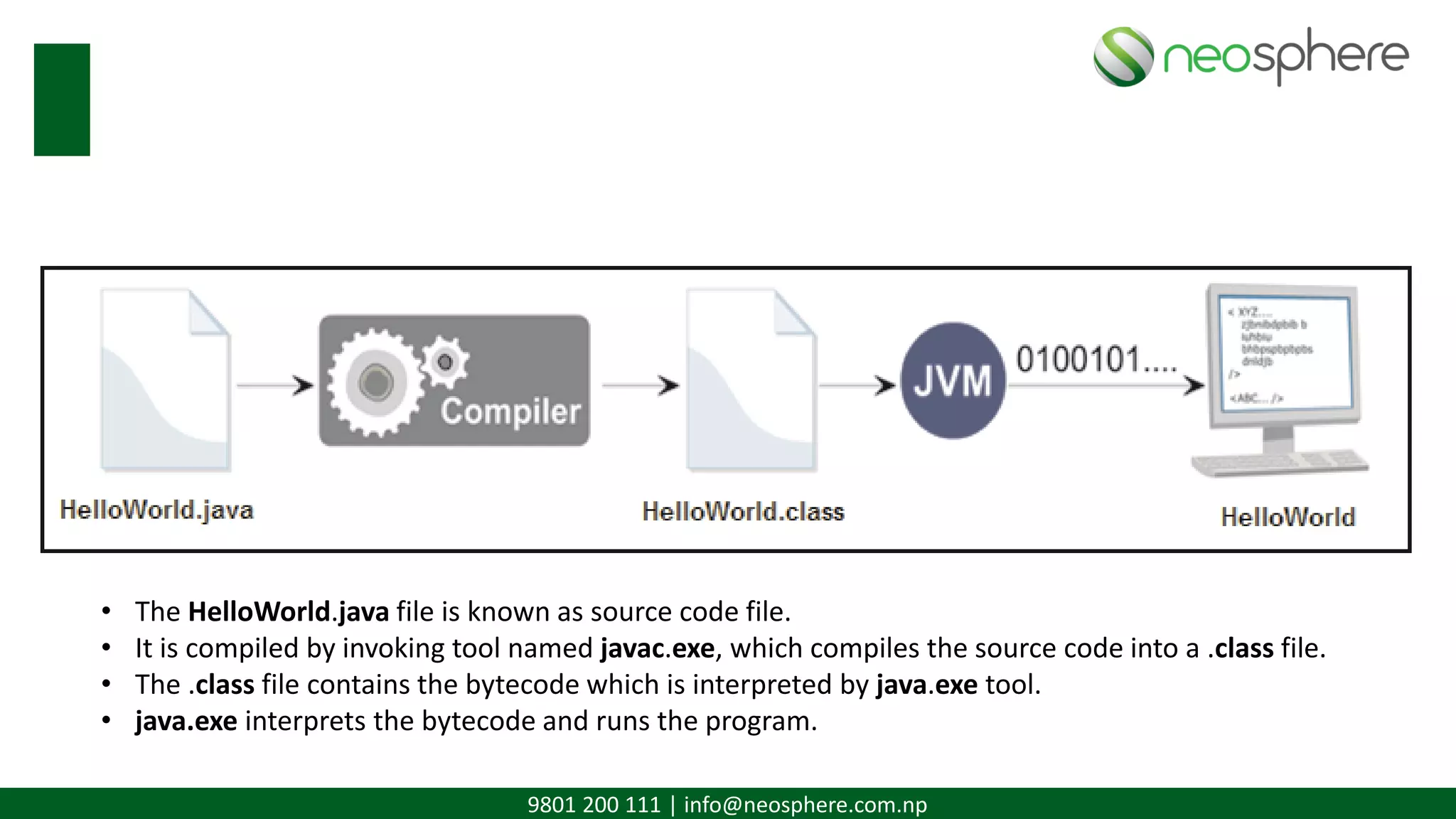
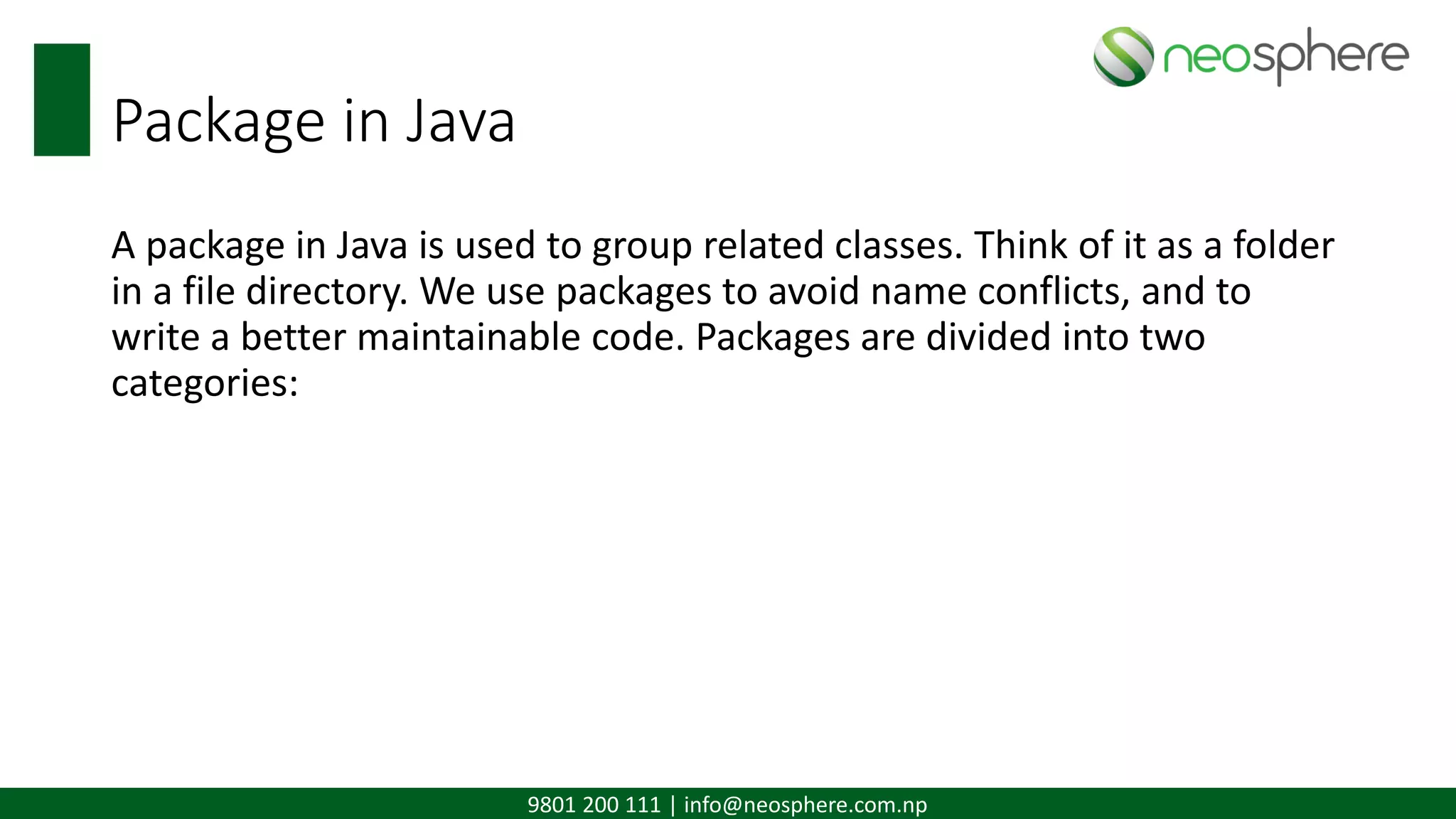
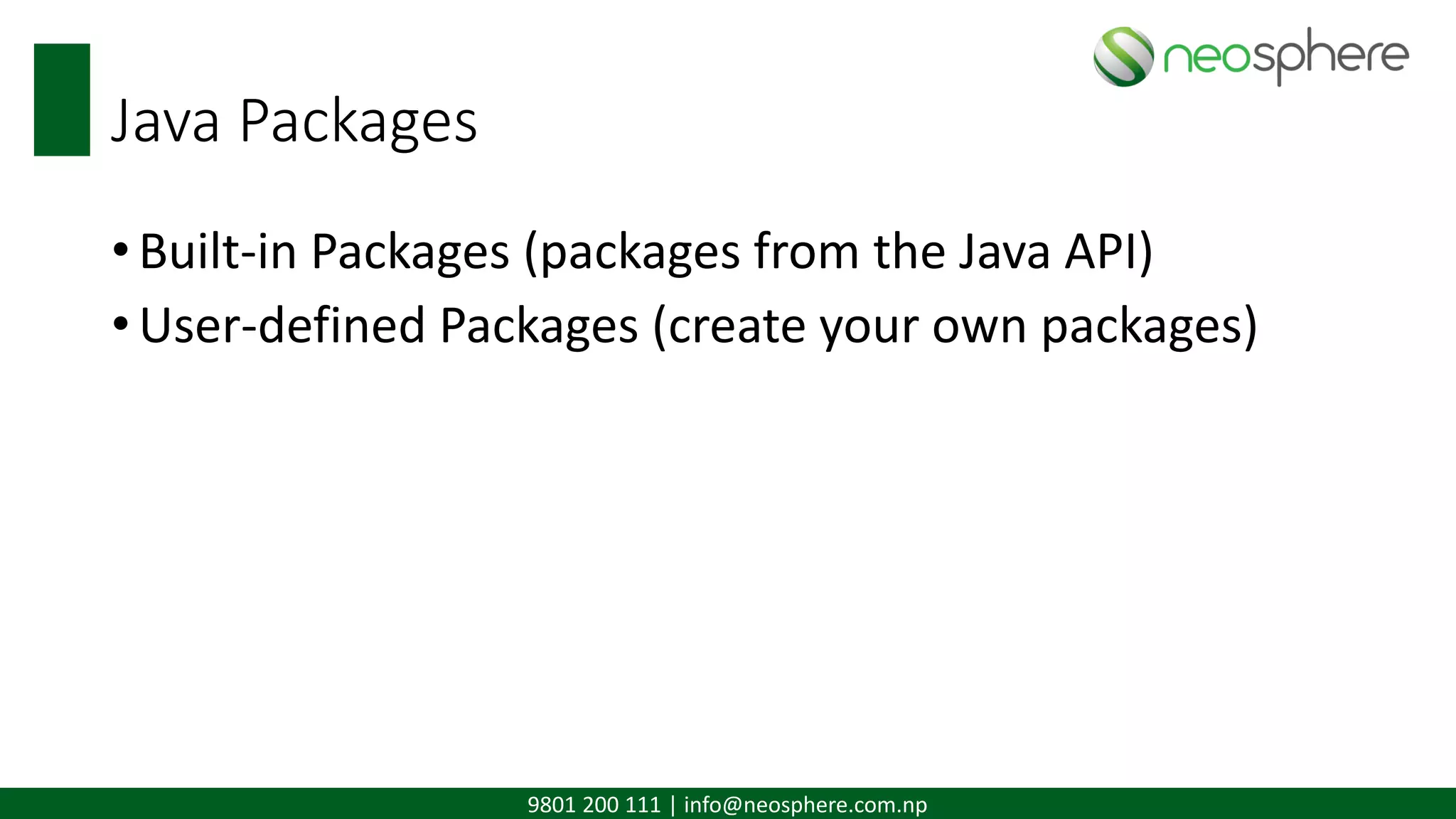
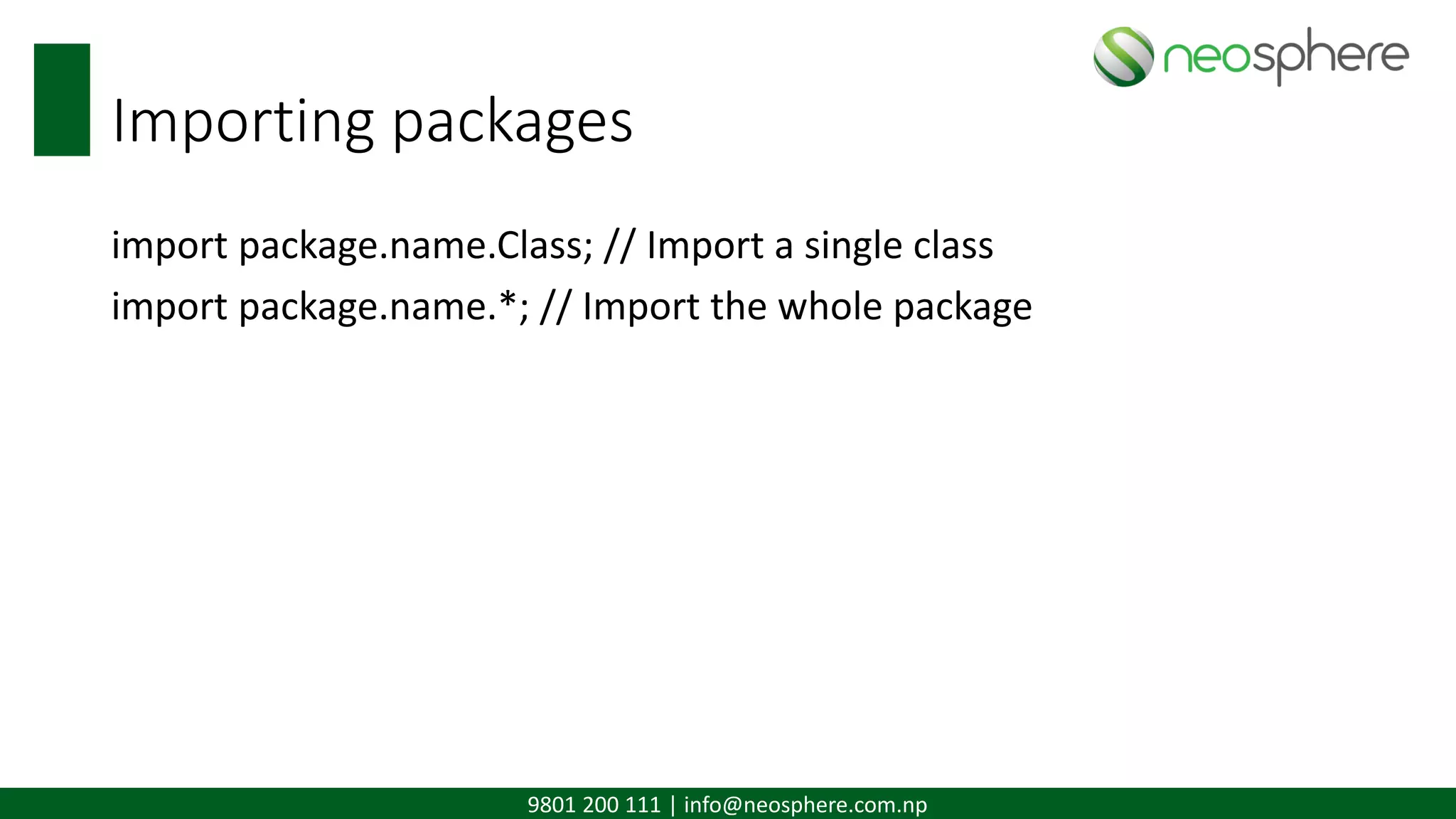
![9801 200 111 | info@neosphere.com.np Scanner Class in Java import java.util.Scanner; class MyClass { public static void main(String[] args) { Scanner myObj = new Scanner(System.in); System.out.println("Enter username"); String userName = myObj.nextLine(); System.out.println("Username is: " + userName); } }](https://image.slidesharecdn.com/java-190220105554/75/Java-Programming-Workshop-16-2048.jpg)
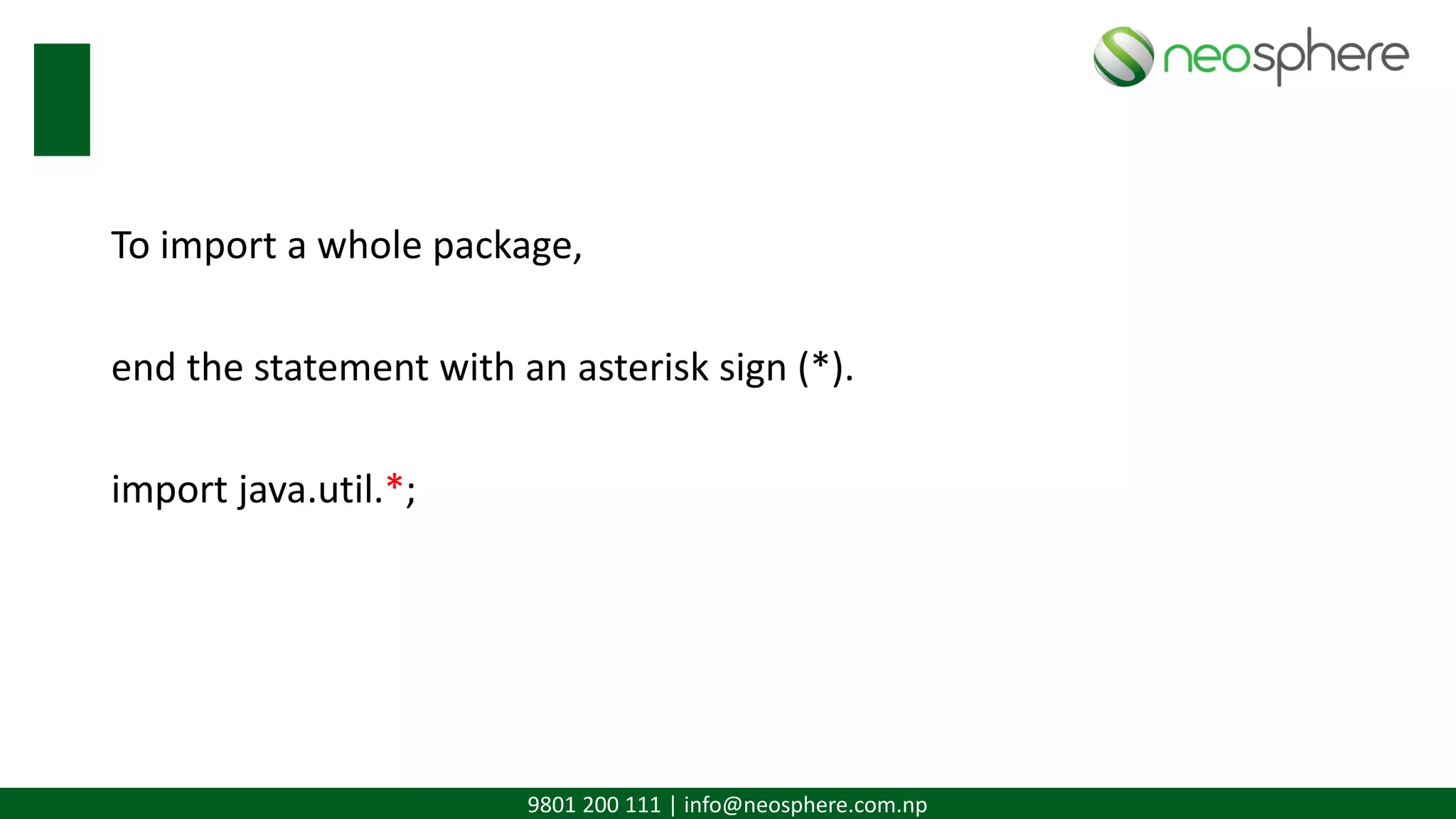
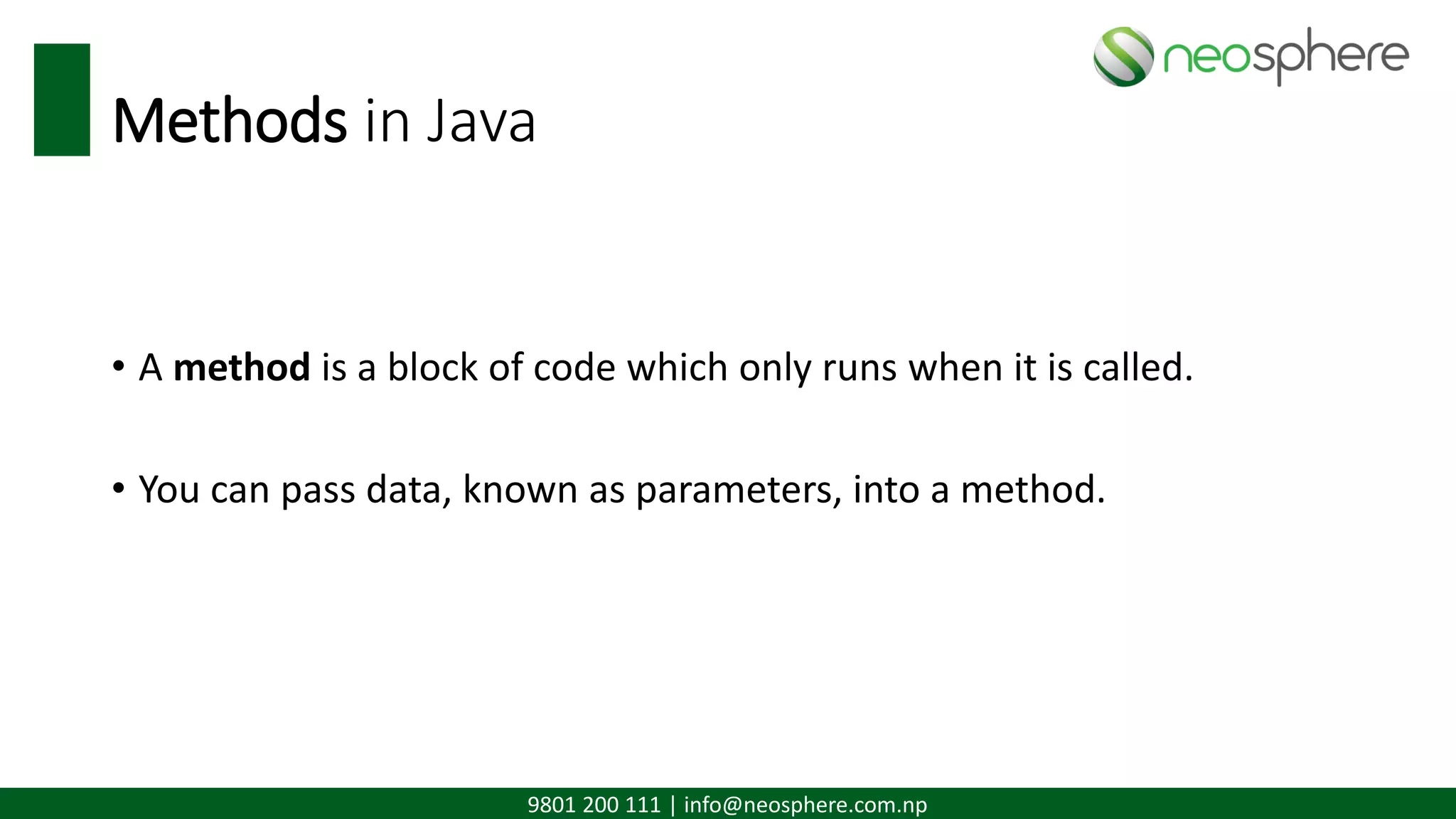
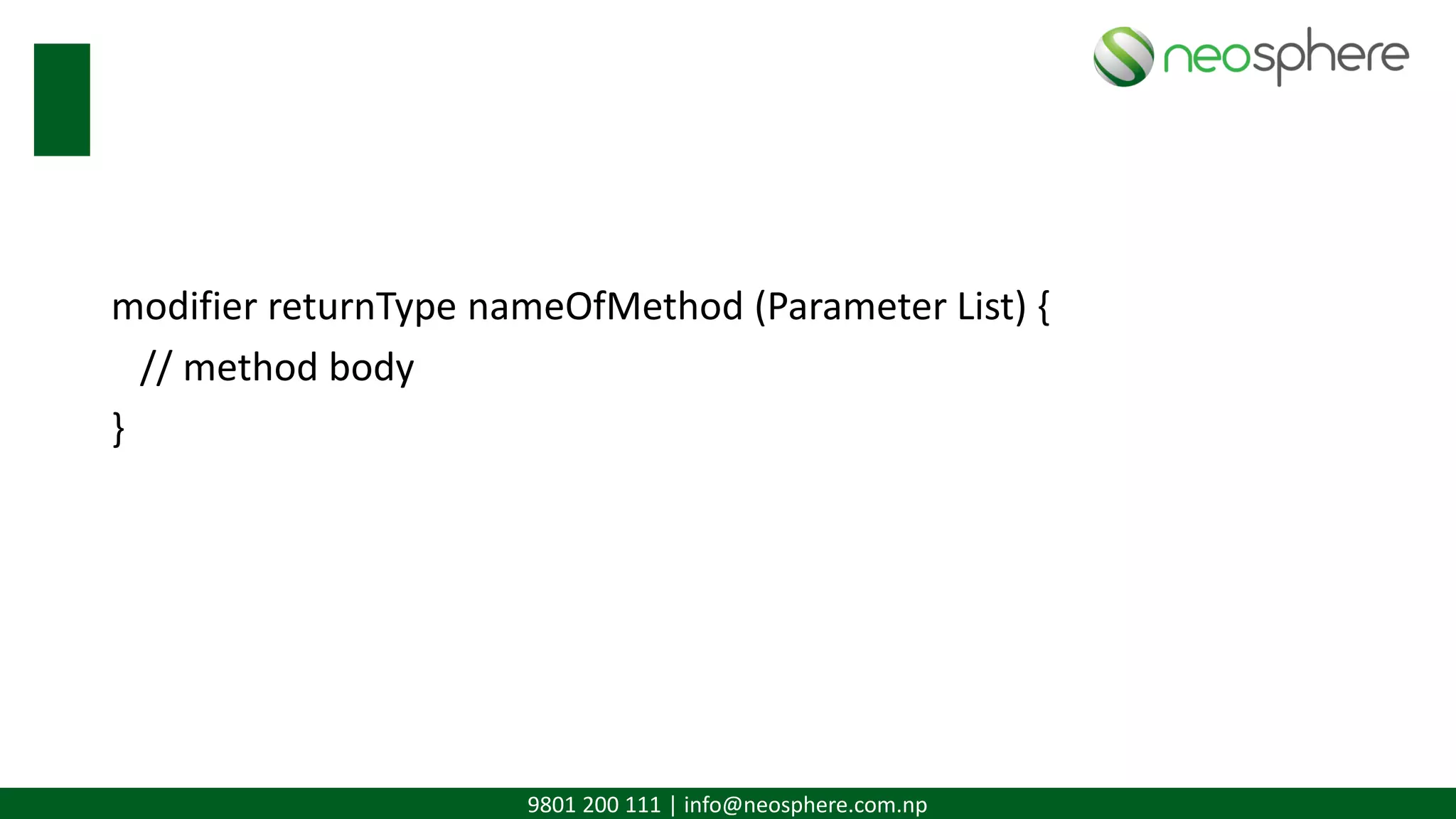
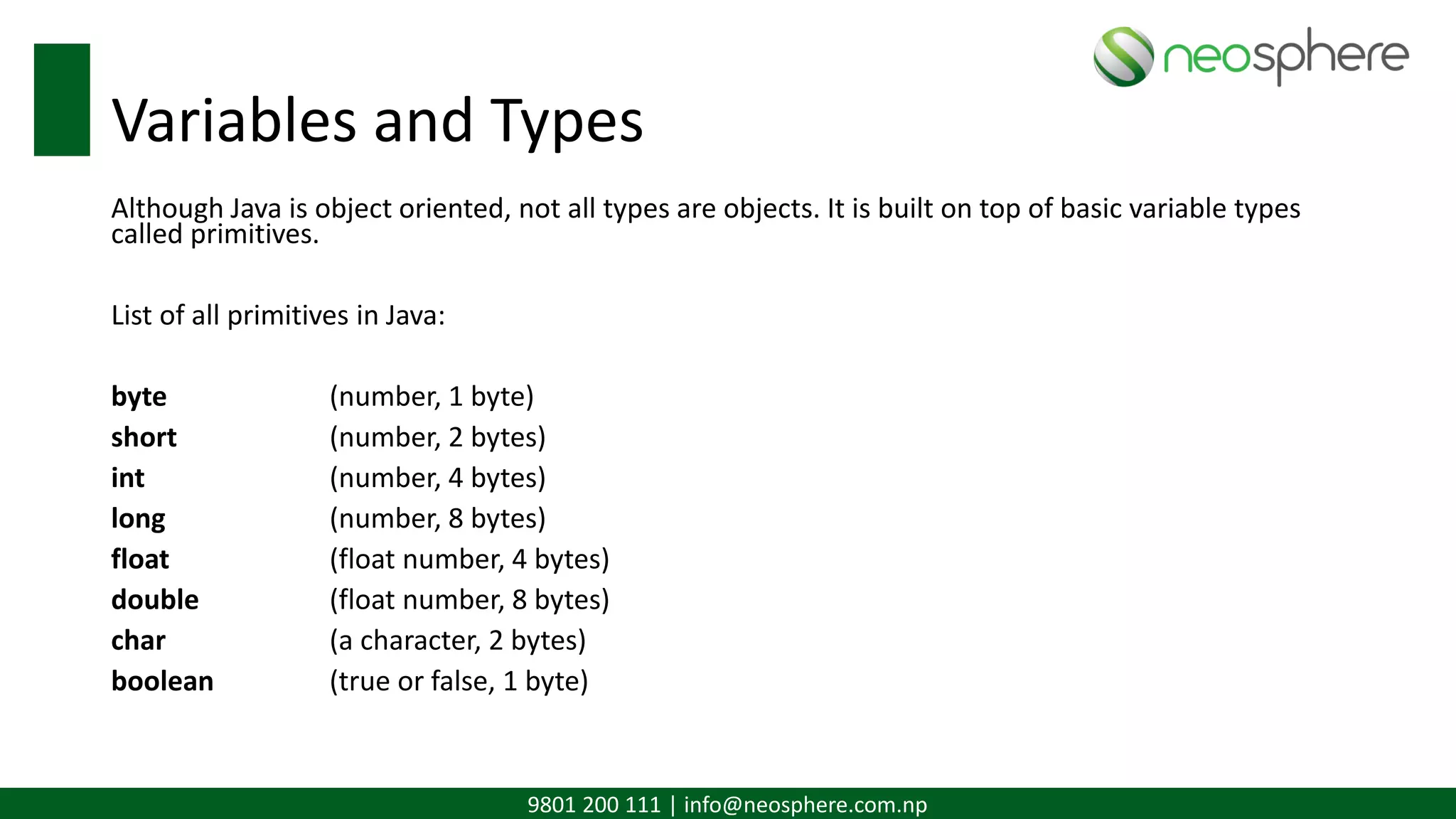
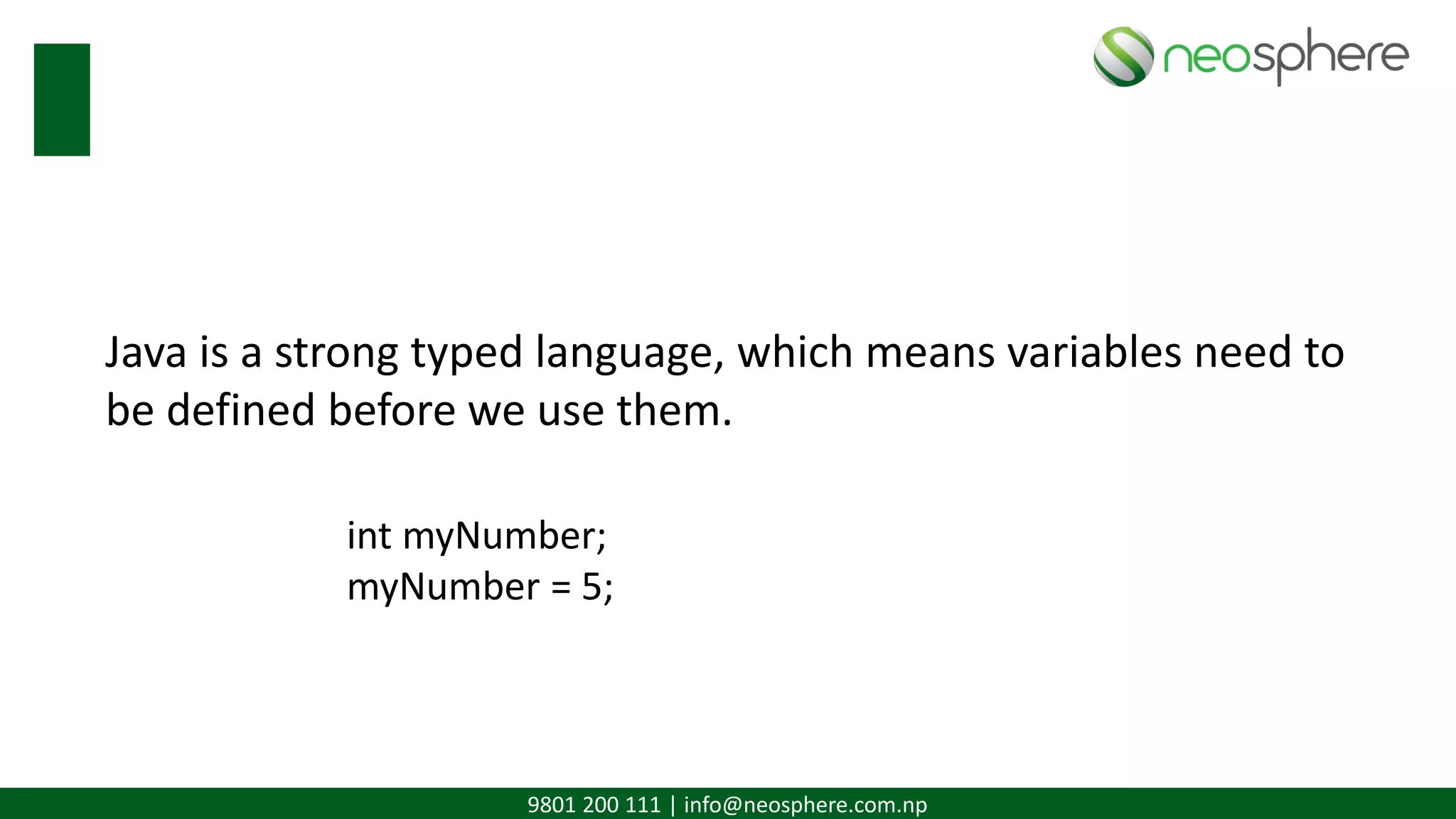
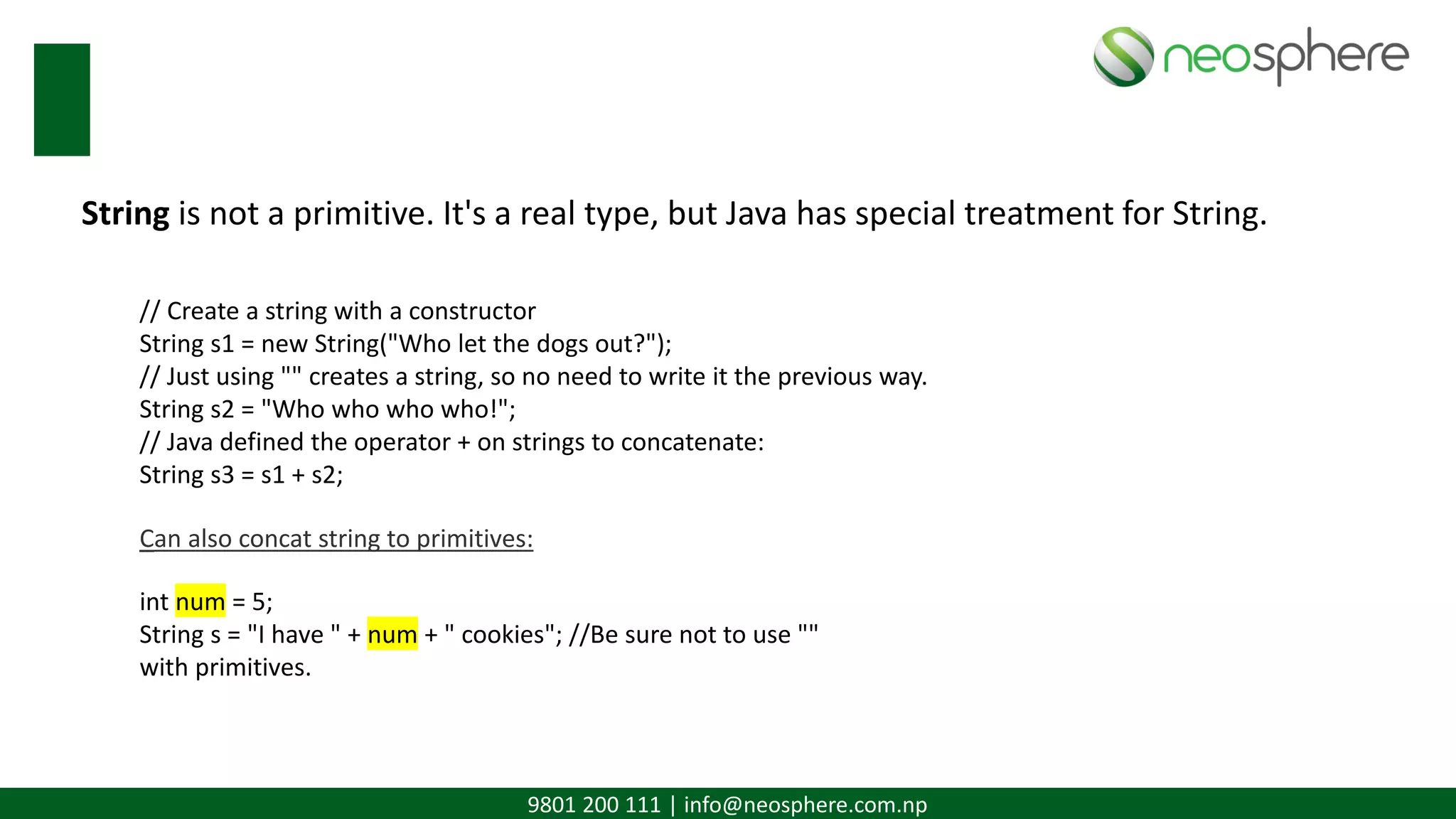
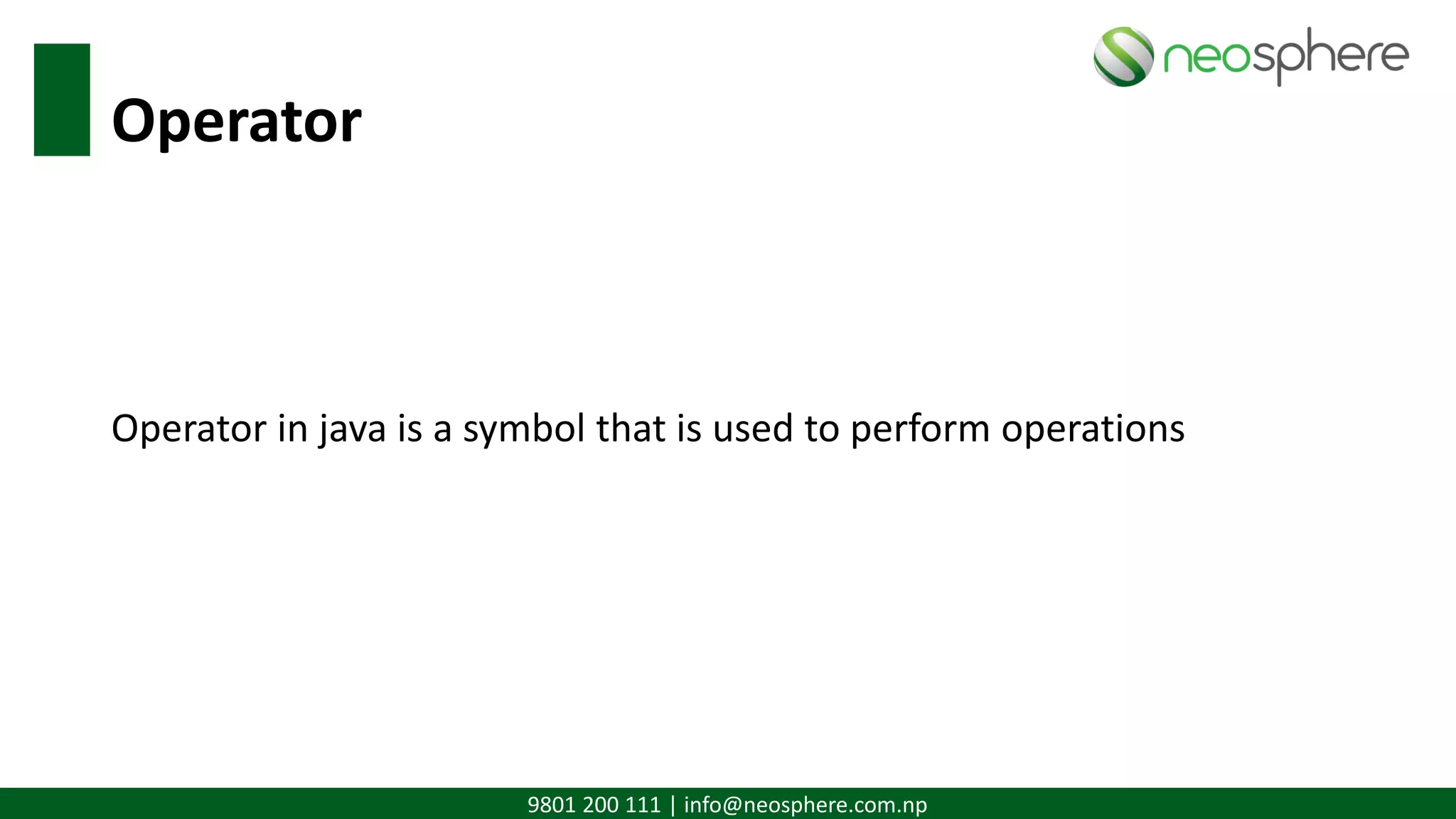
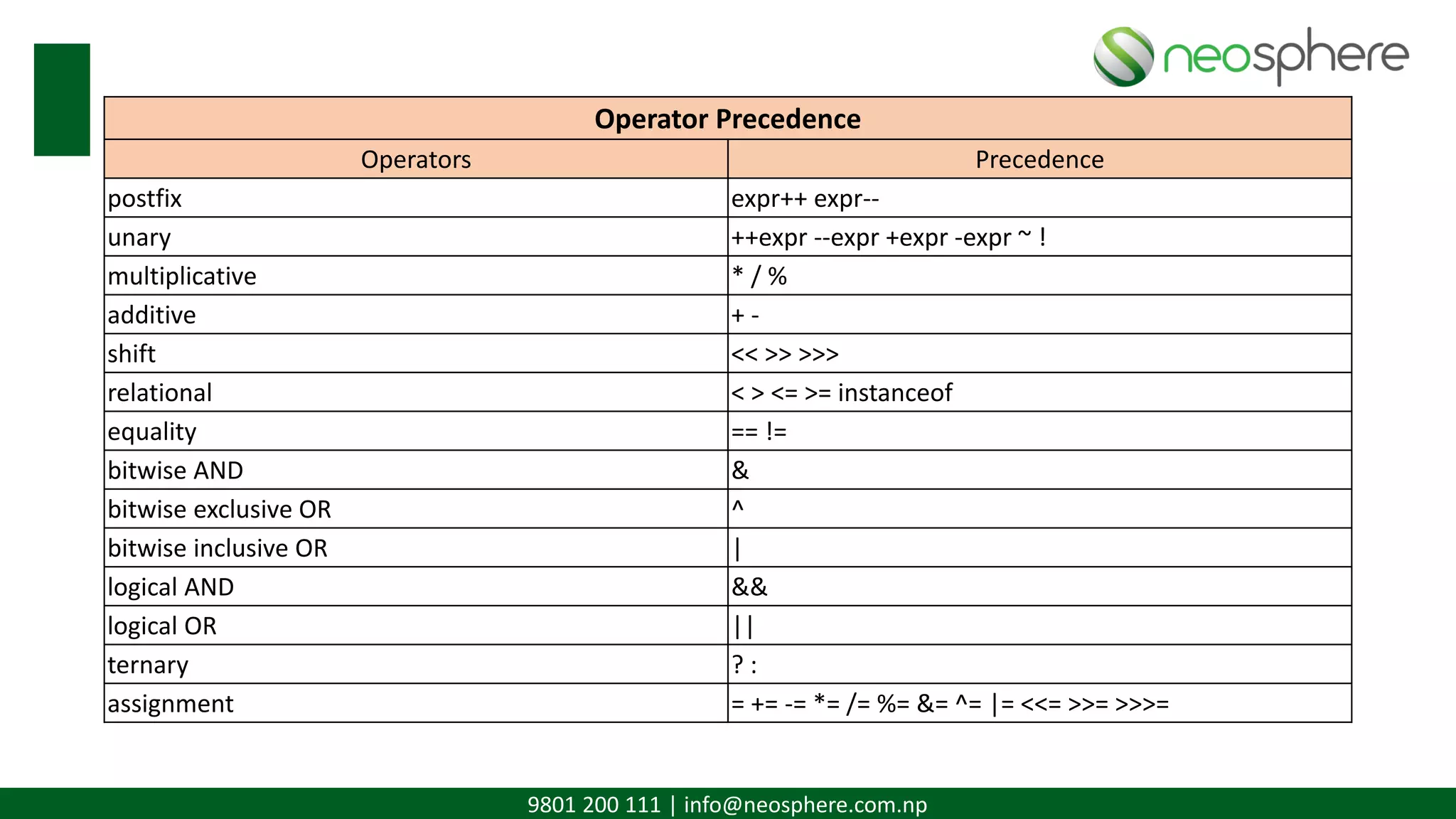
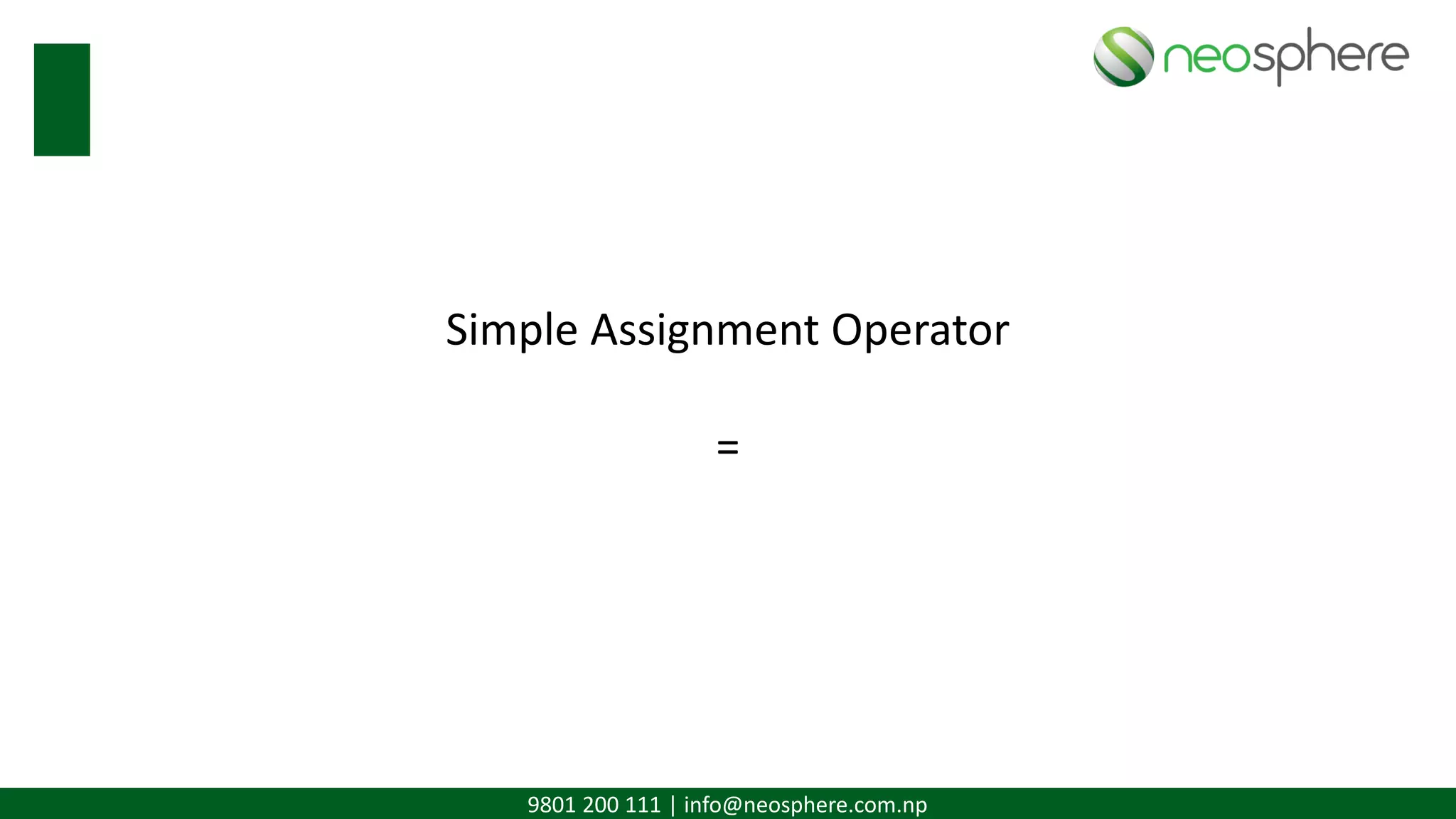
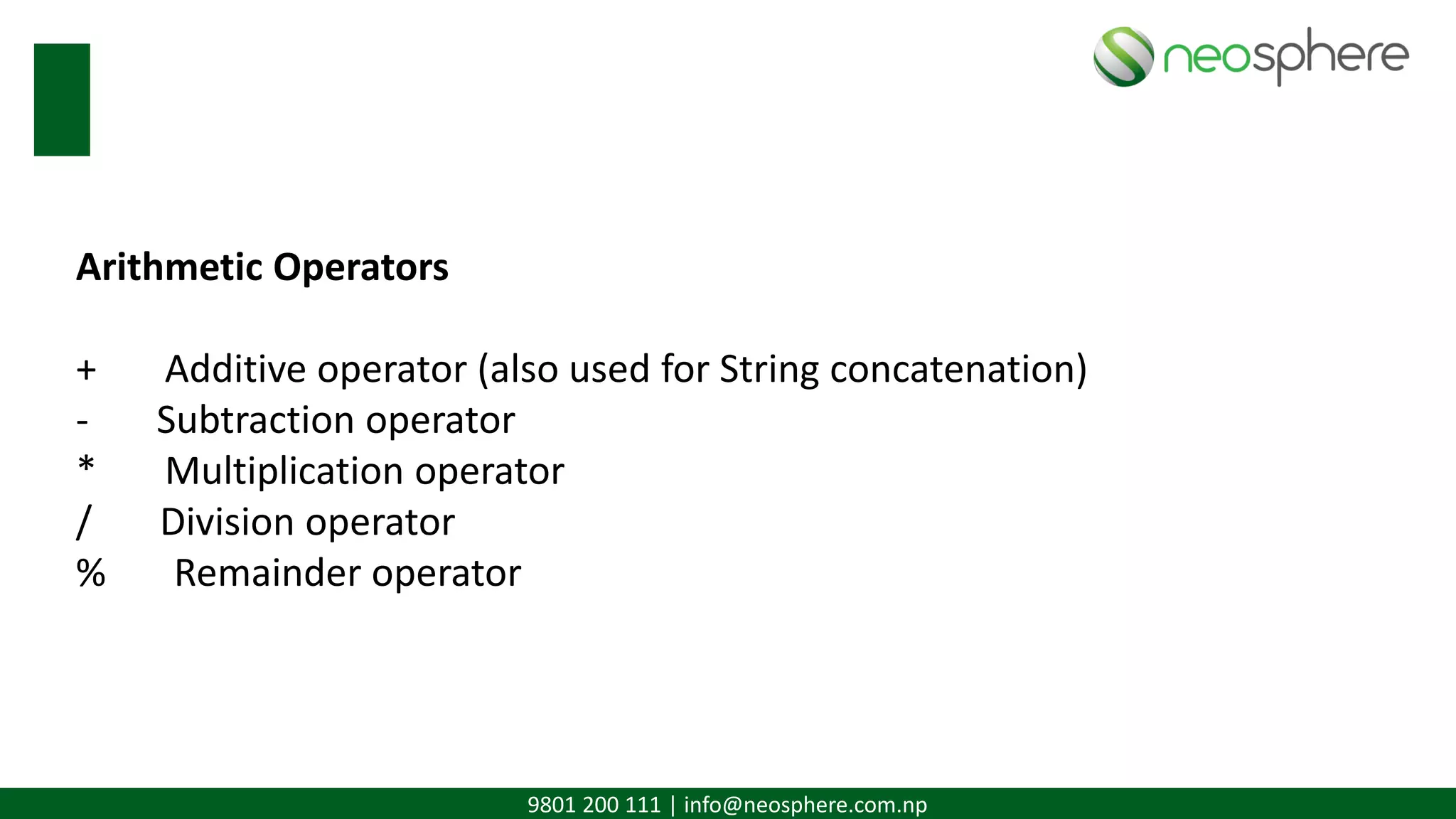
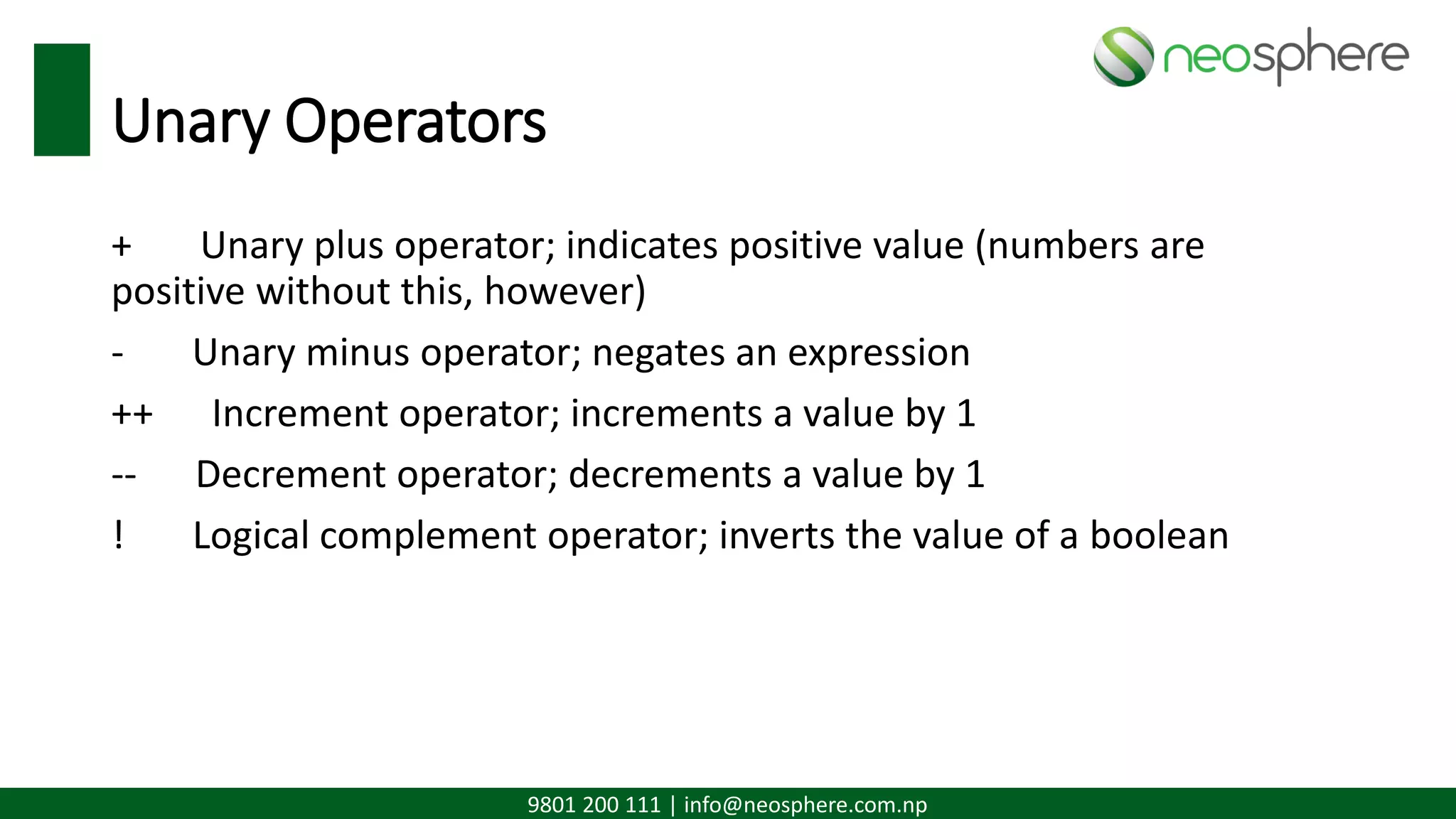
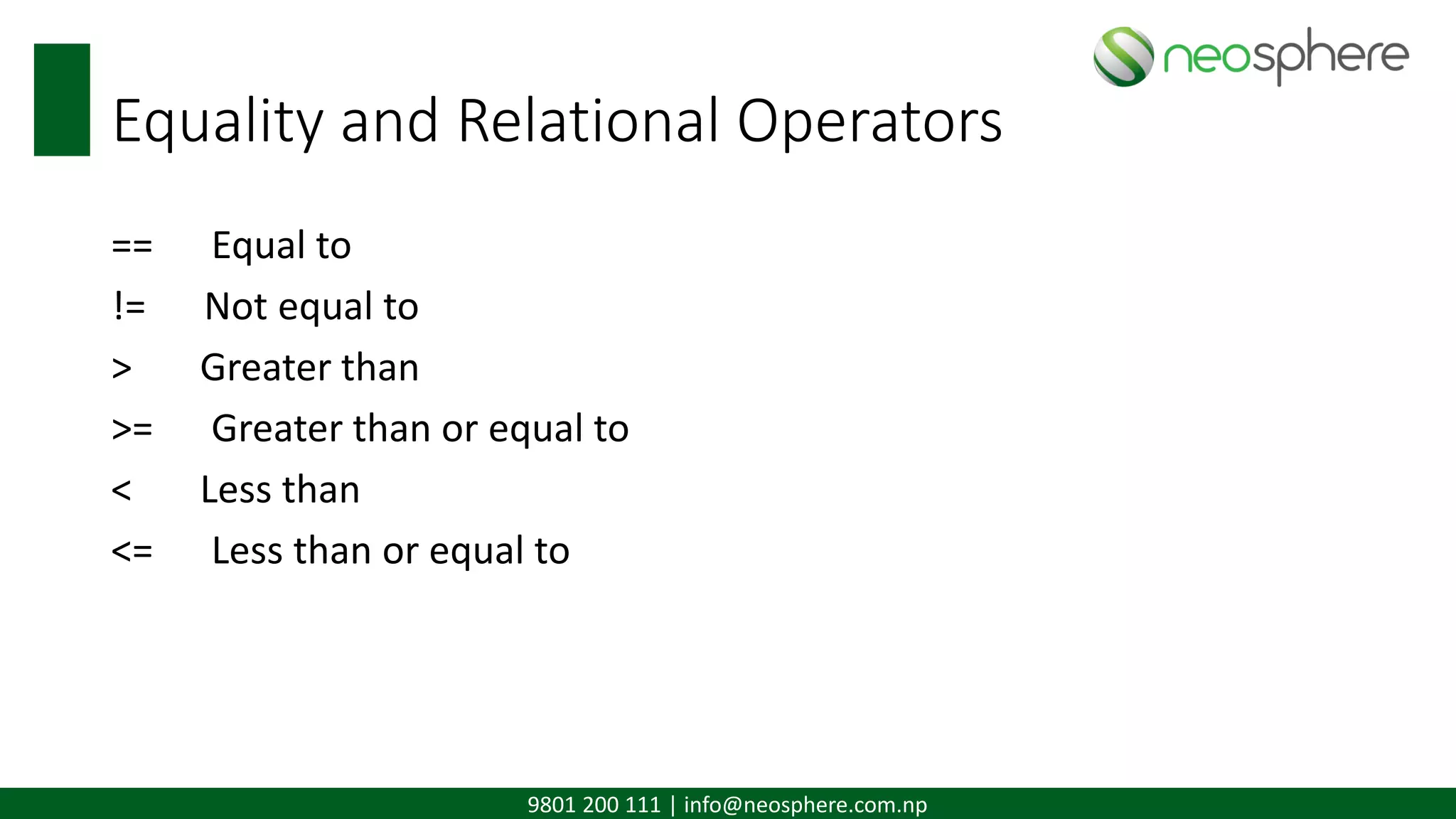
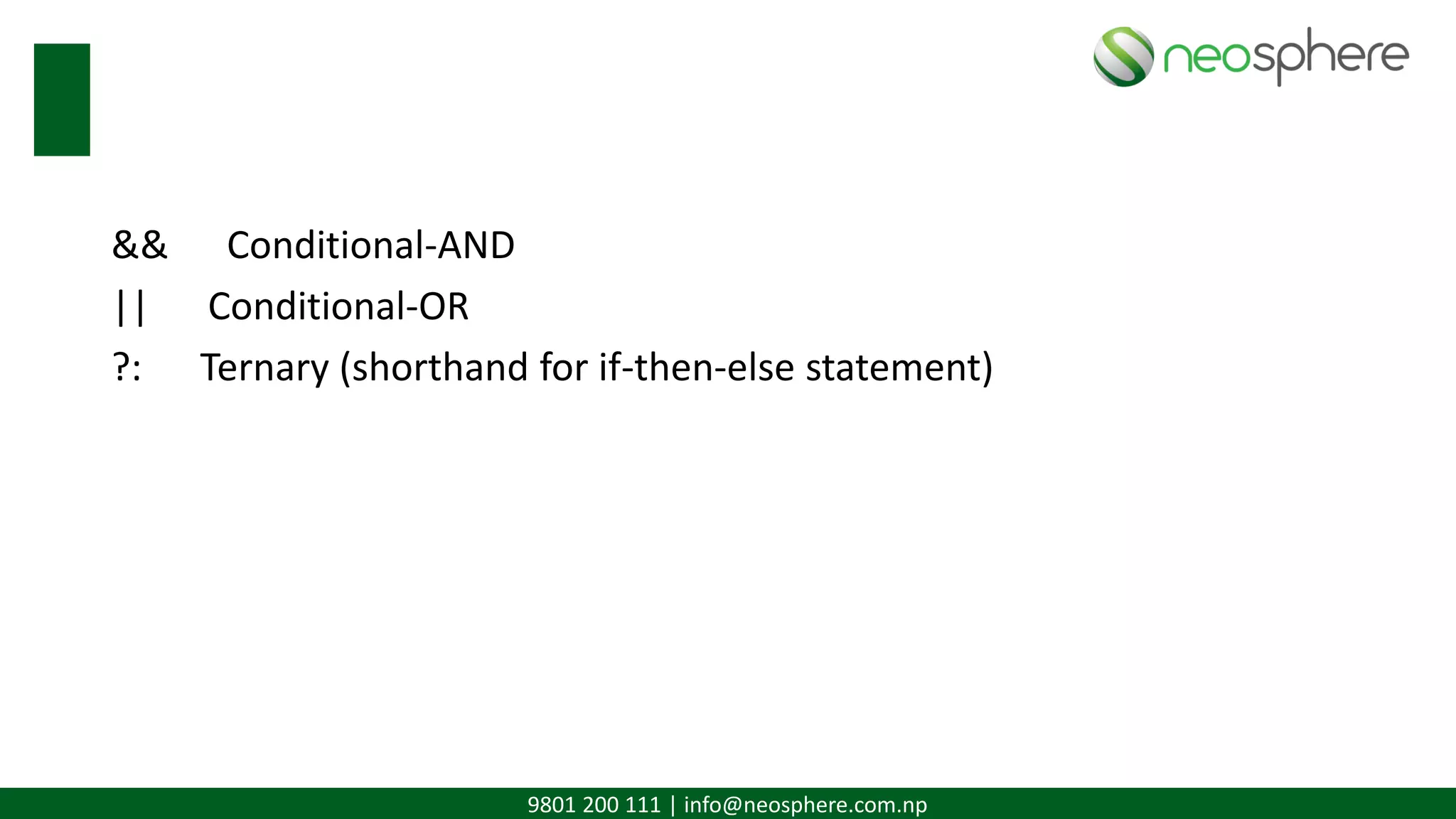
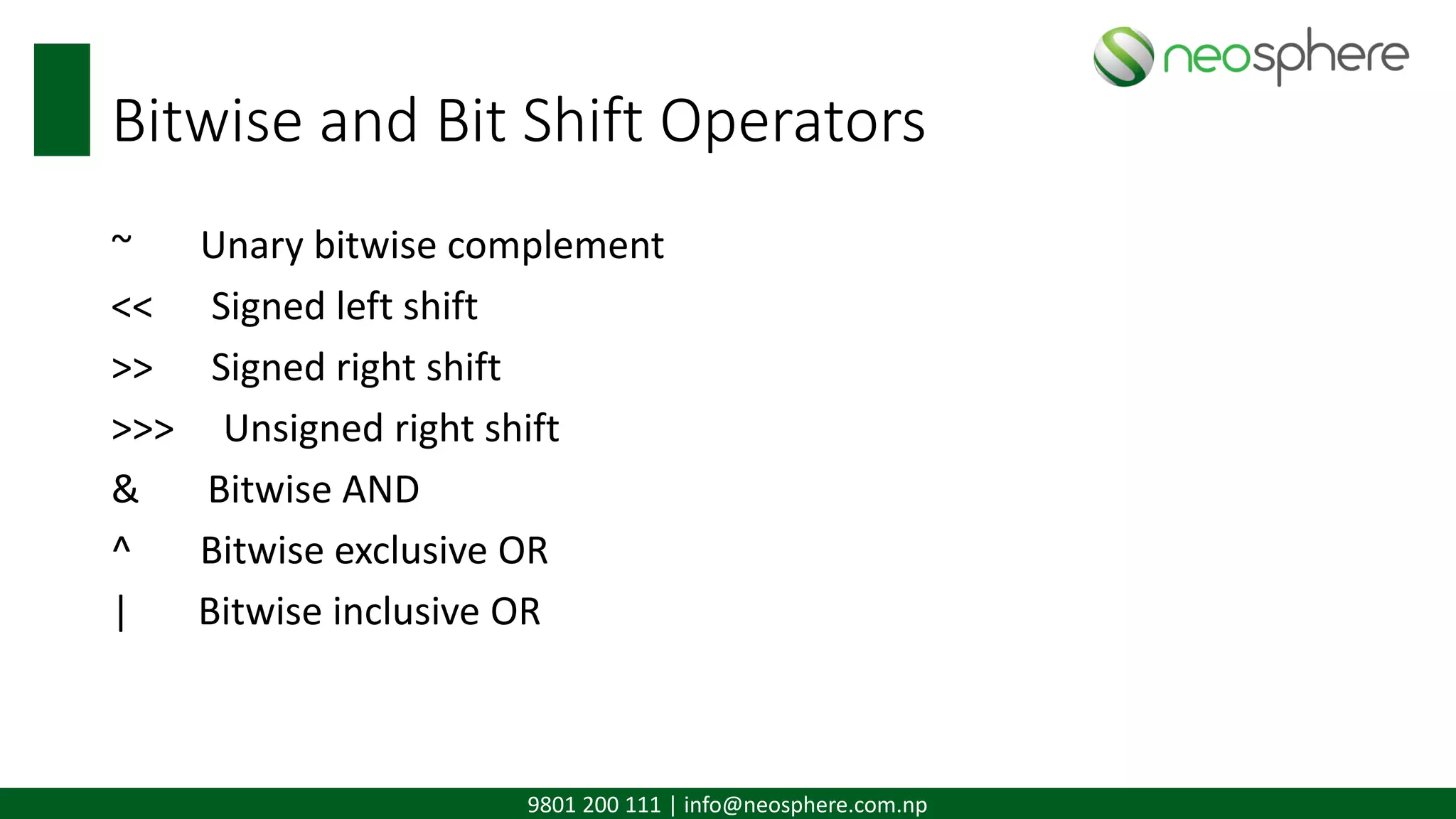
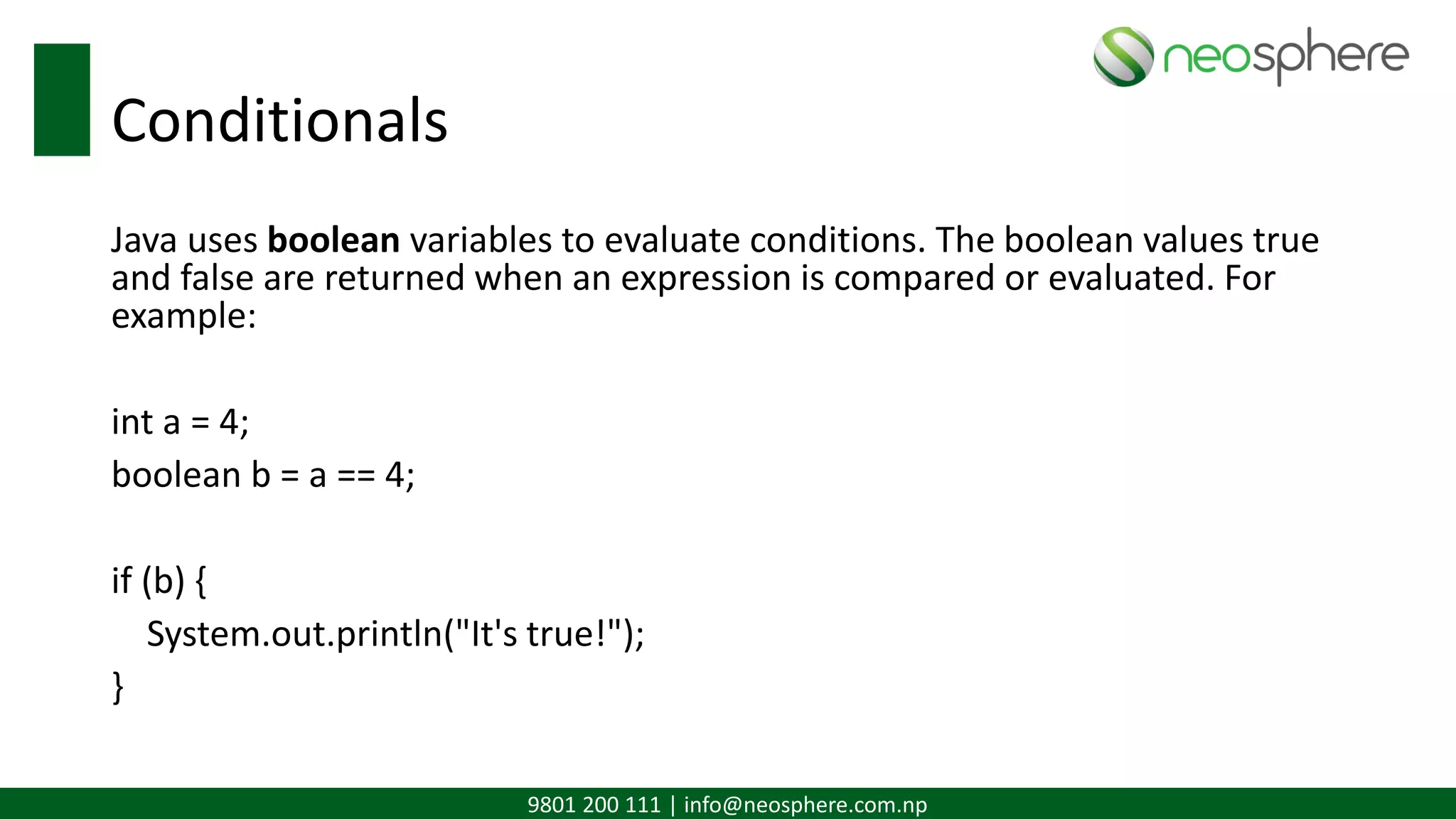
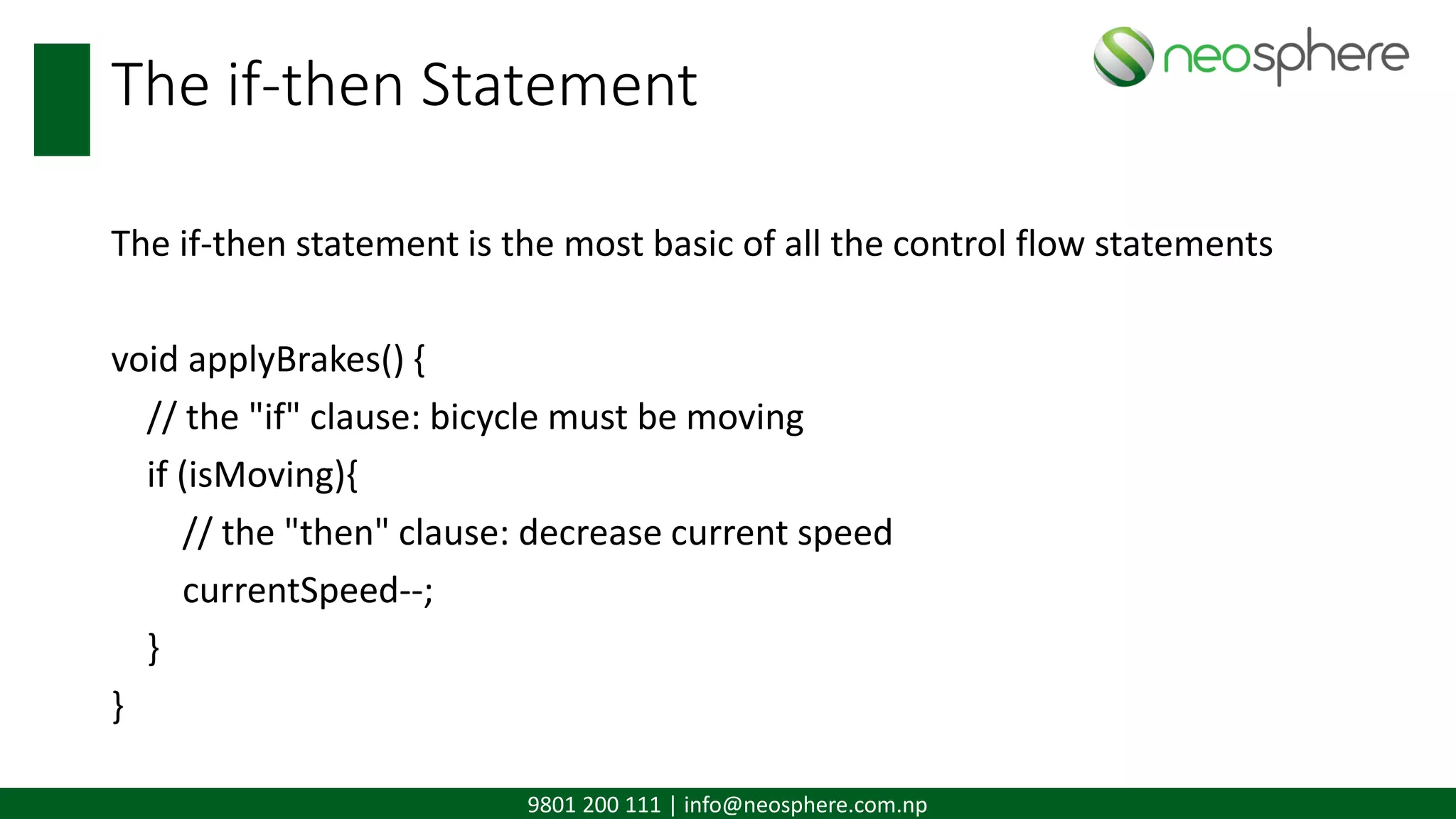
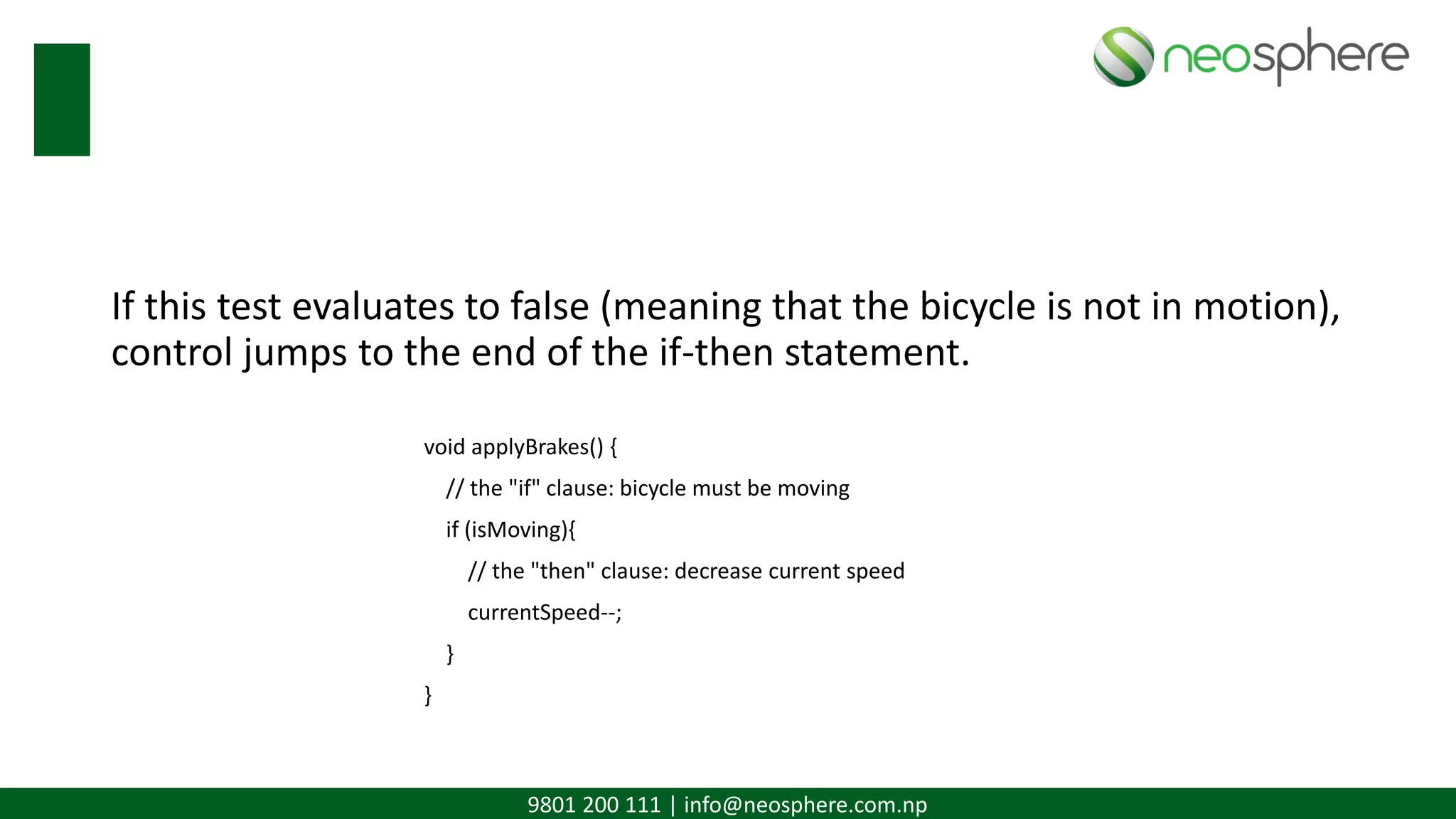
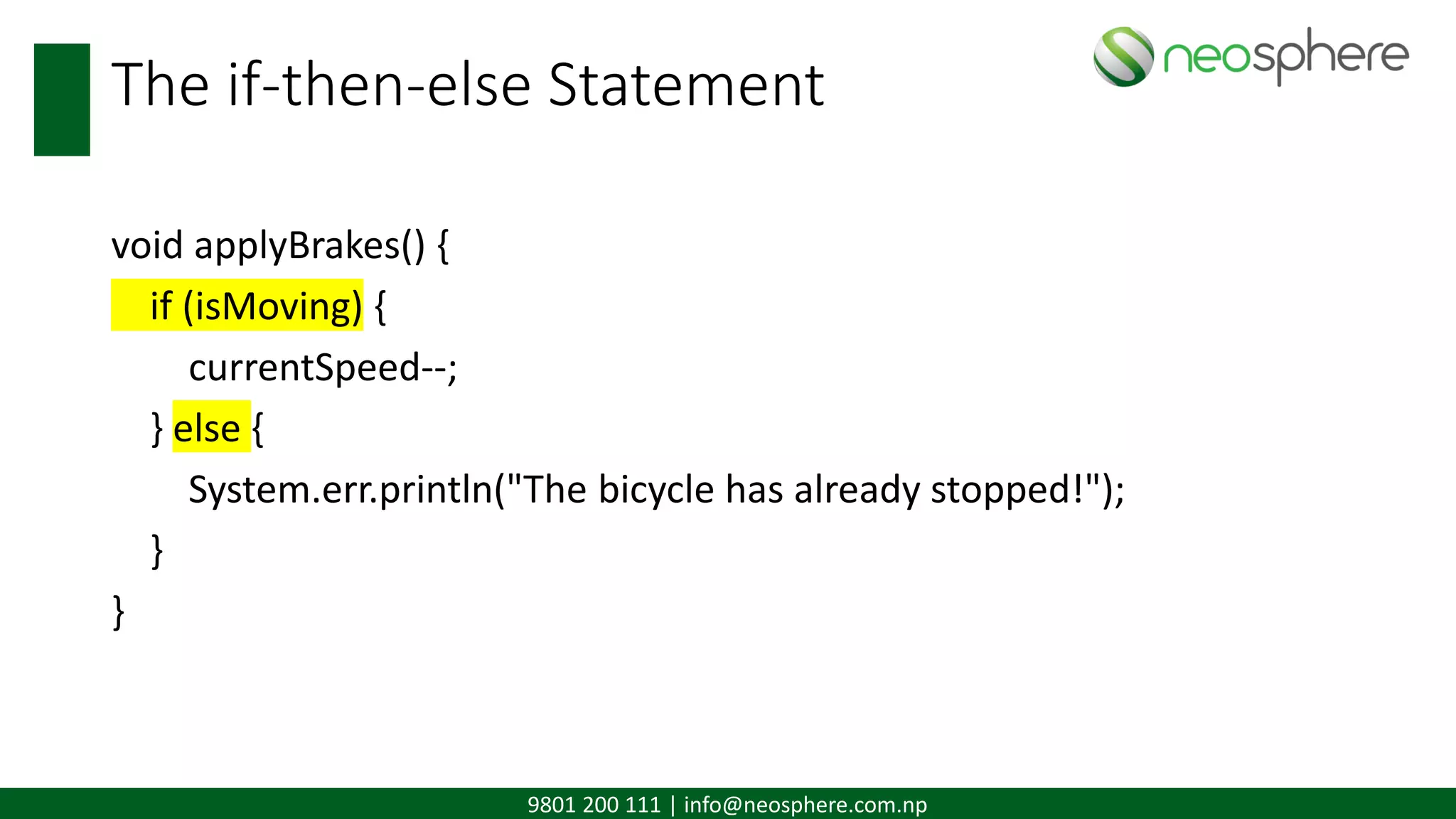
![9801 200 111 | info@neosphere.com.np class IfElseDemo { public static void main(String[] args) { int testscore = 76; char grade; if (testscore >= 90) { grade = 'A'; } else if (testscore >= 80) { grade = 'B'; } else if (testscore >= 70) { grade = 'C'; } else if (testscore >= 60) { grade = 'D'; } else { grade = 'F'; } System.out.println("Grade = " + grade); } }](https://image.slidesharecdn.com/java-190220105554/75/Java-Programming-Workshop-35-2048.jpg)
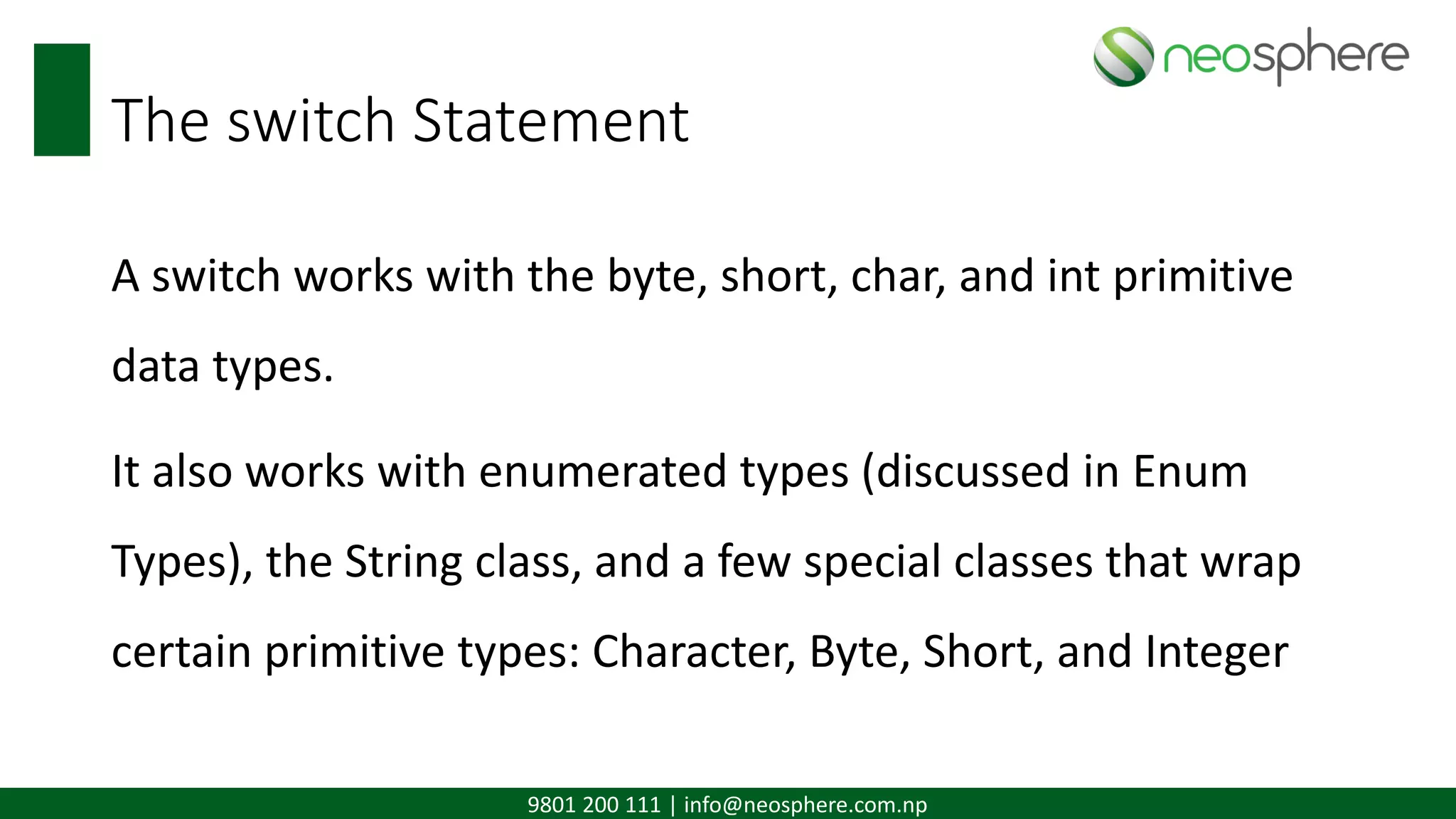
![9801 200 111 | info@neosphere.com.np public class SwitchDemo { public static void main(String[] args) { int month = 8; String monthString; switch (month) { case 1: monthString = "January"; break; case 2: monthString = "February"; break; case 3: monthString = "March"; break; case 4: monthString = "April"; break;](https://image.slidesharecdn.com/java-190220105554/75/Java-Programming-Workshop-37-2048.jpg)
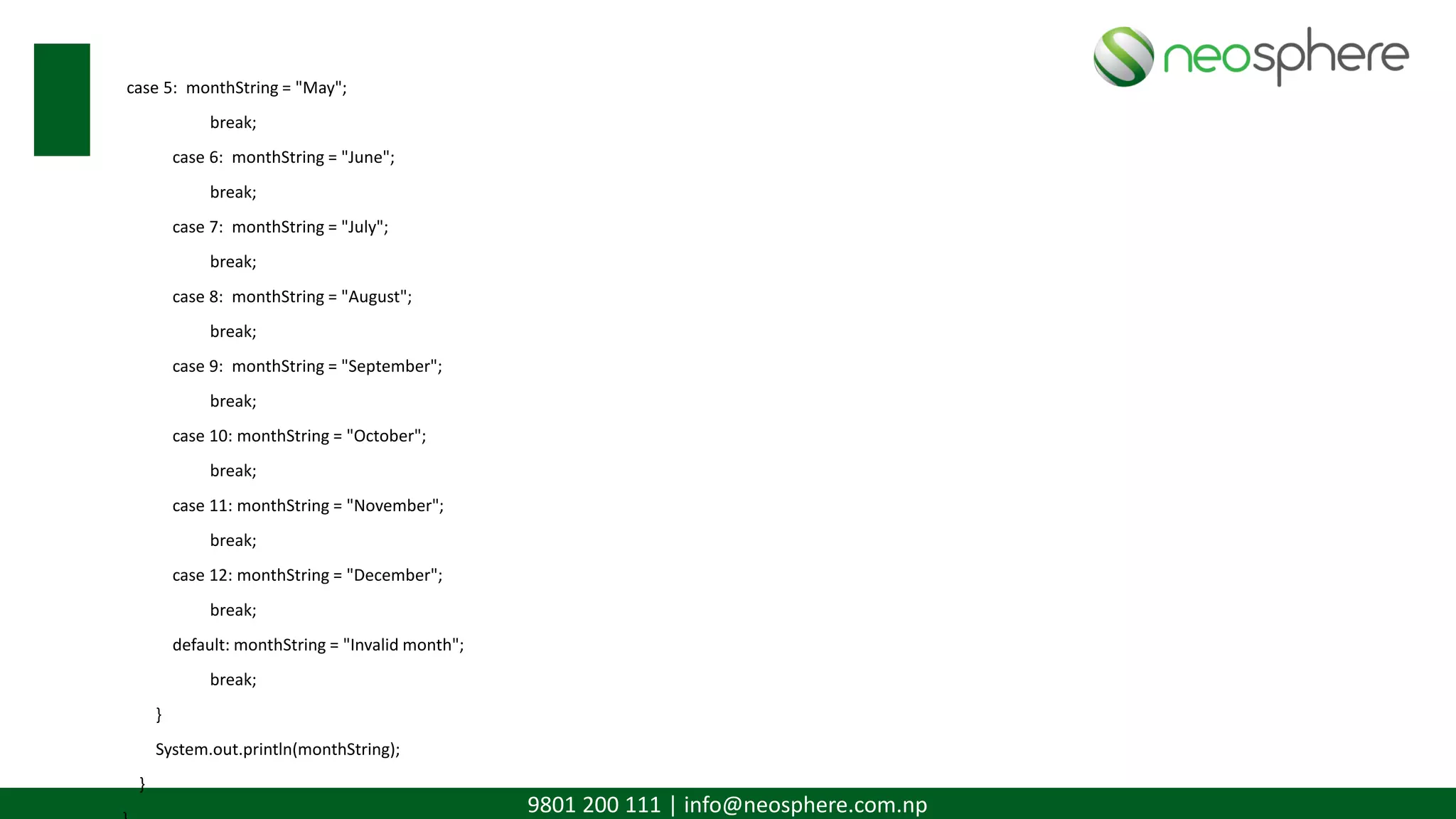
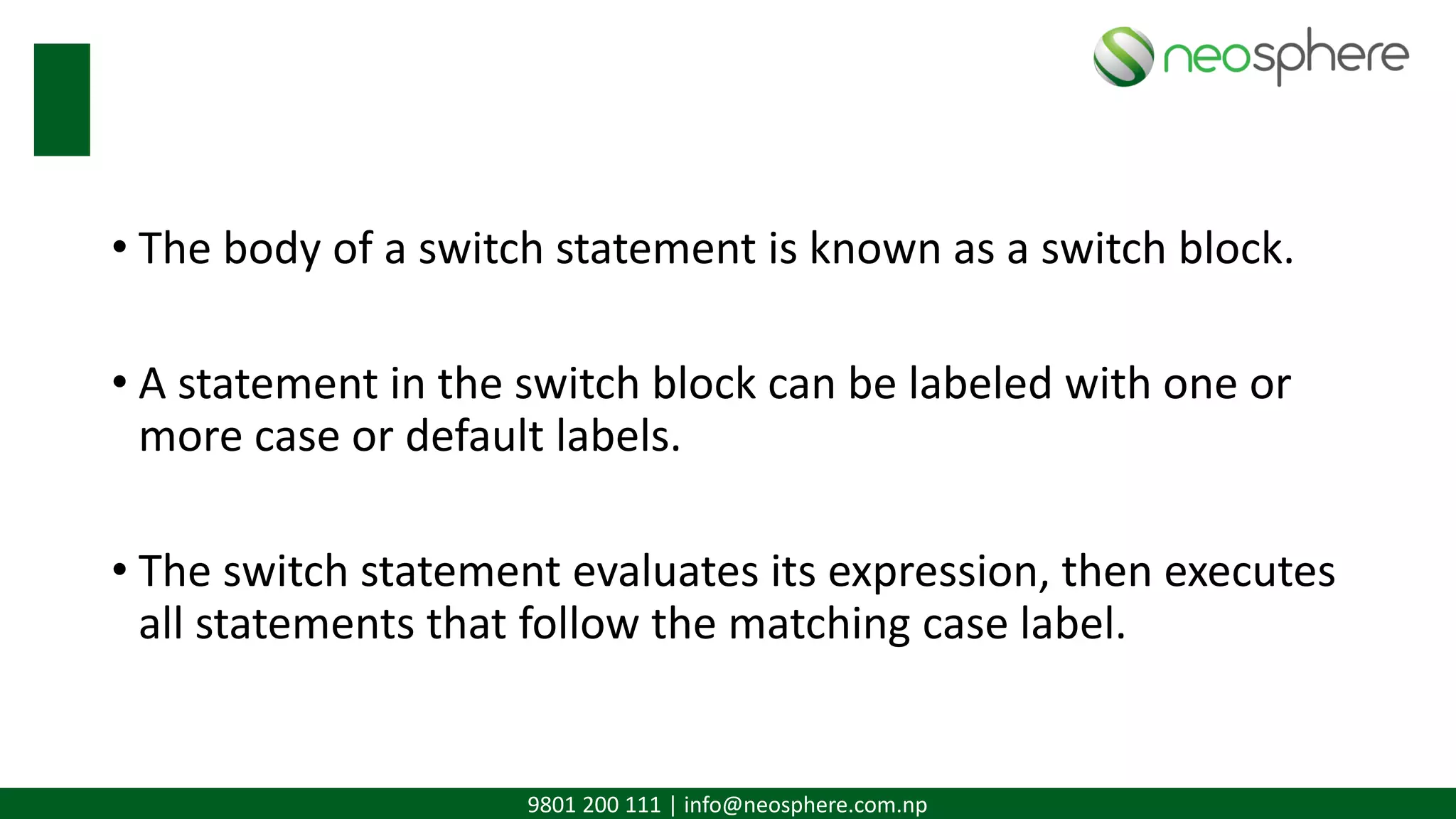
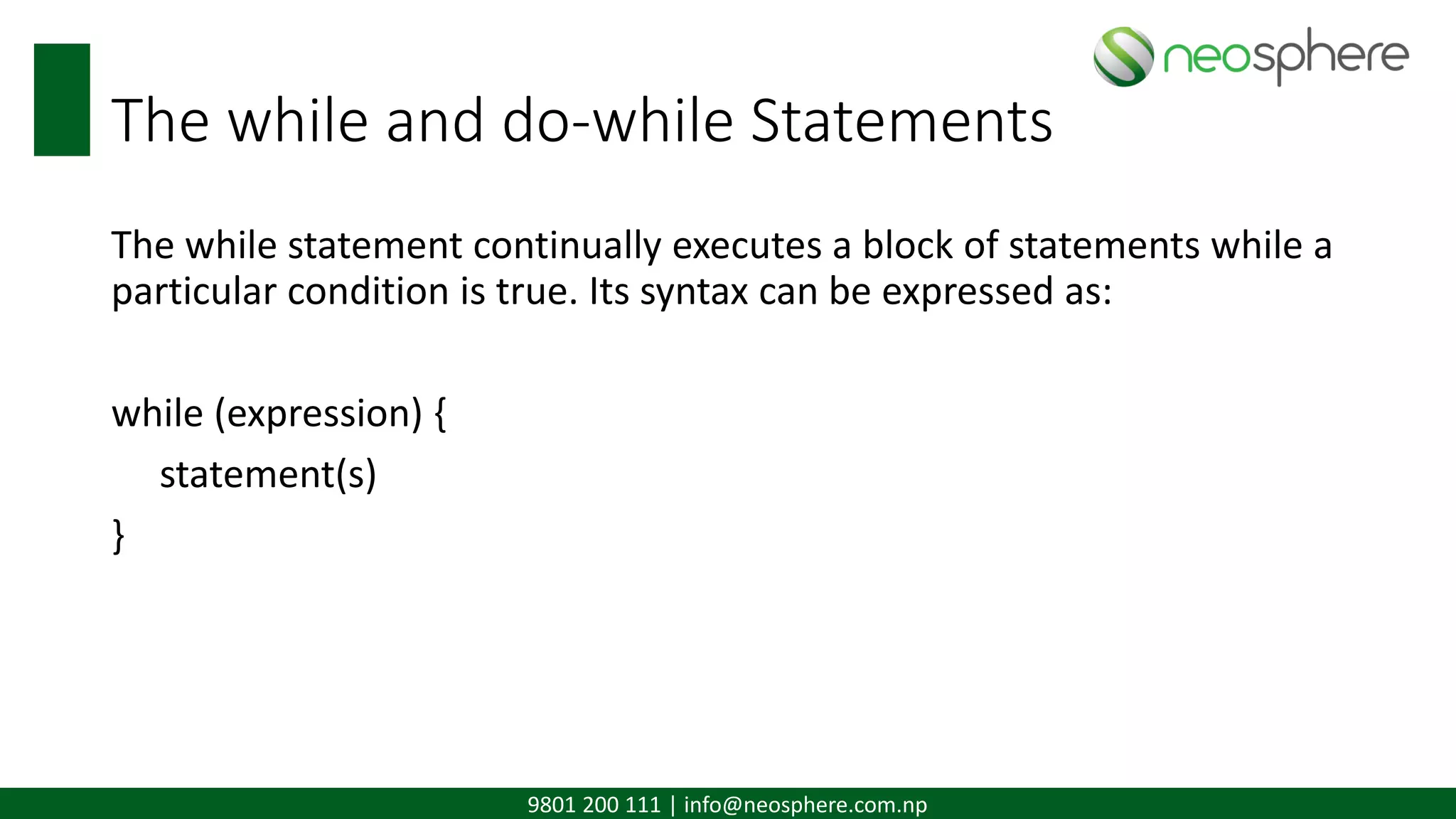
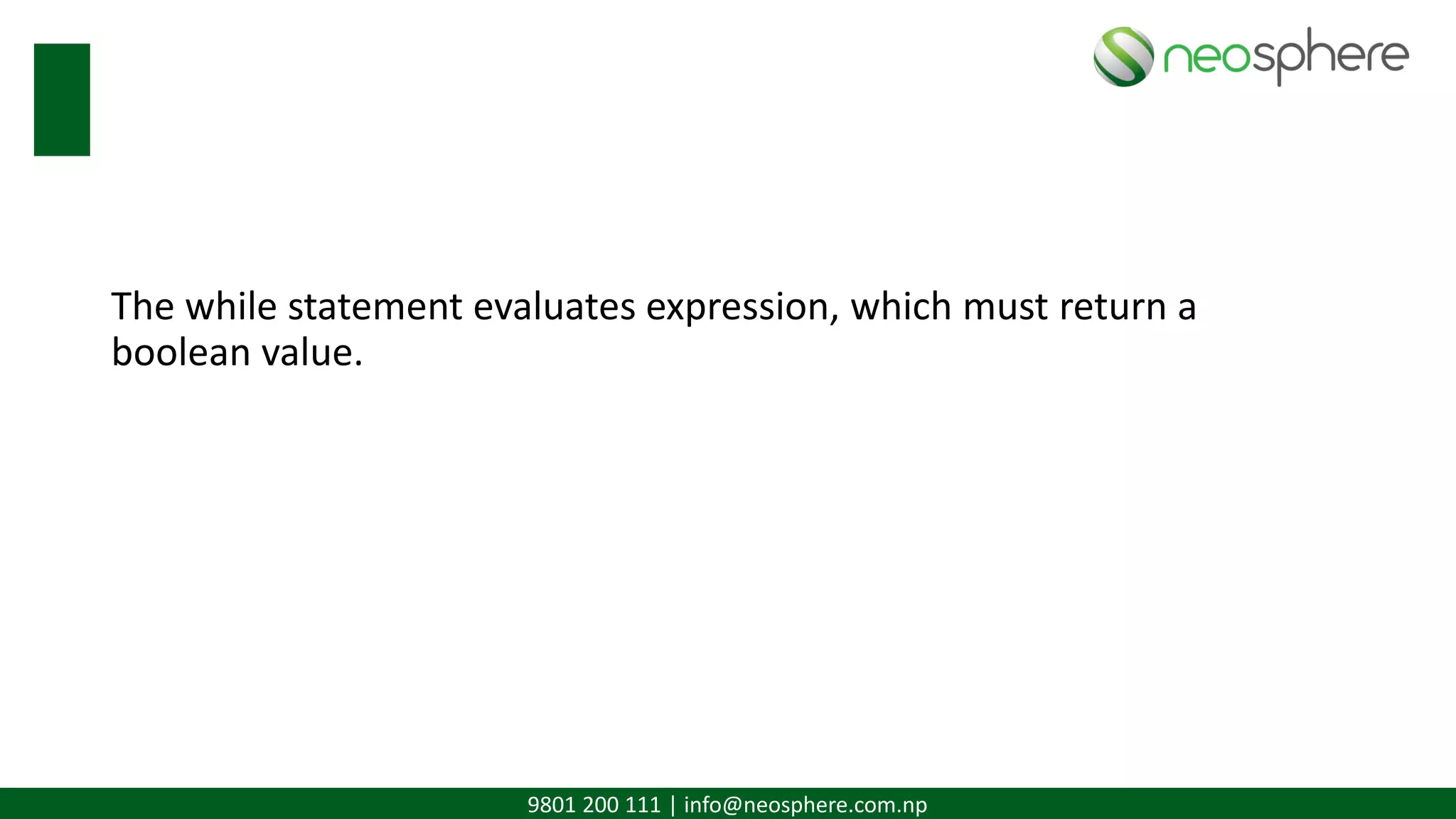
![9801 200 111 | info@neosphere.com.np class WhileDemo { public static void main(String[] args){ int count = 1; while (count < 11) { System.out.println("Count is: " + count); count++; } } }](https://image.slidesharecdn.com/java-190220105554/75/Java-Programming-Workshop-42-2048.jpg)
![9801 200 111 | info@neosphere.com.np Do…while class DoWhileDemo { public static void main(String[] args){ int count = 1; do { System.out.println("Count is: " + count); count++; } while (count < 11); } }](https://image.slidesharecdn.com/java-190220105554/75/Java-Programming-Workshop-43-2048.jpg)
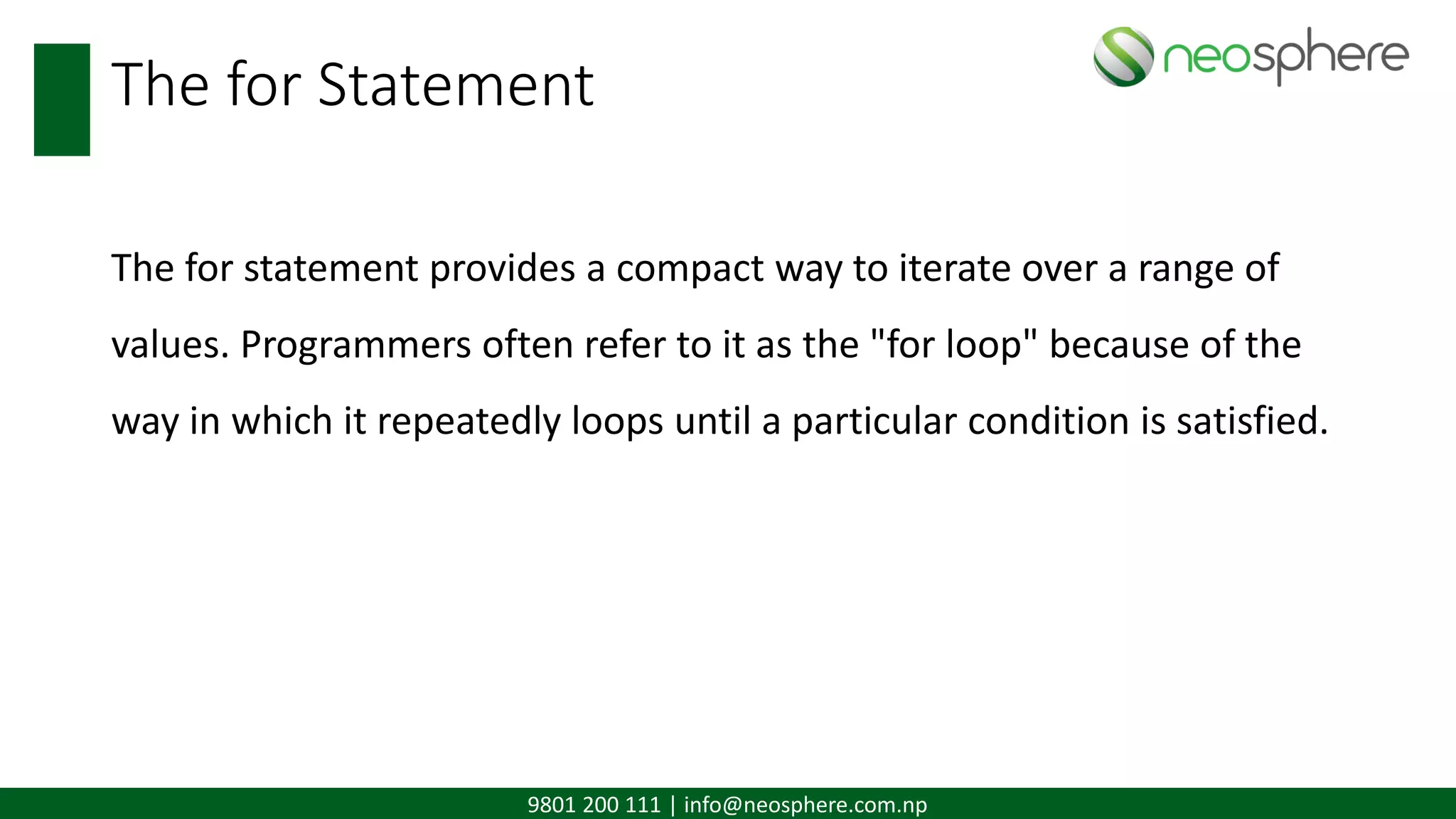
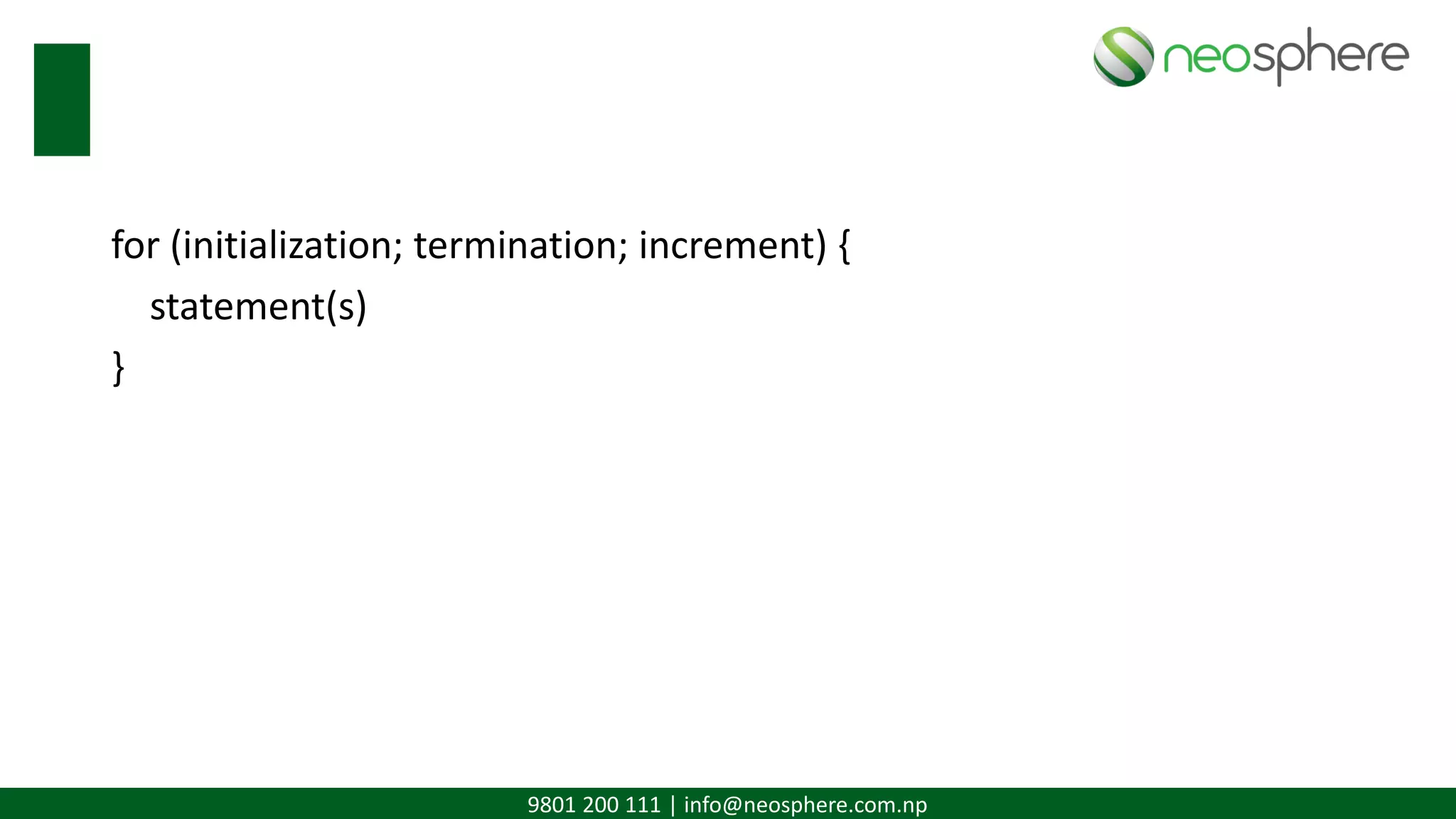
![9801 200 111 | info@neosphere.com.np class ForDemo { public static void main(String[] args){ for(int i=1; i<11; i++){ System.out.println("Count is: " + i); } } }](https://image.slidesharecdn.com/java-190220105554/75/Java-Programming-Workshop-46-2048.jpg)
![9801 200 111 | info@neosphere.com.np Enhanced for class EnhancedForDemo { public static void main(String[] args){ int[] numbers = {1,2,3,4,5,6,7,8,9,10}; for (int item : numbers) { System.out.println("Count is: " + item); } } }](https://image.slidesharecdn.com/java-190220105554/75/Java-Programming-Workshop-47-2048.jpg)